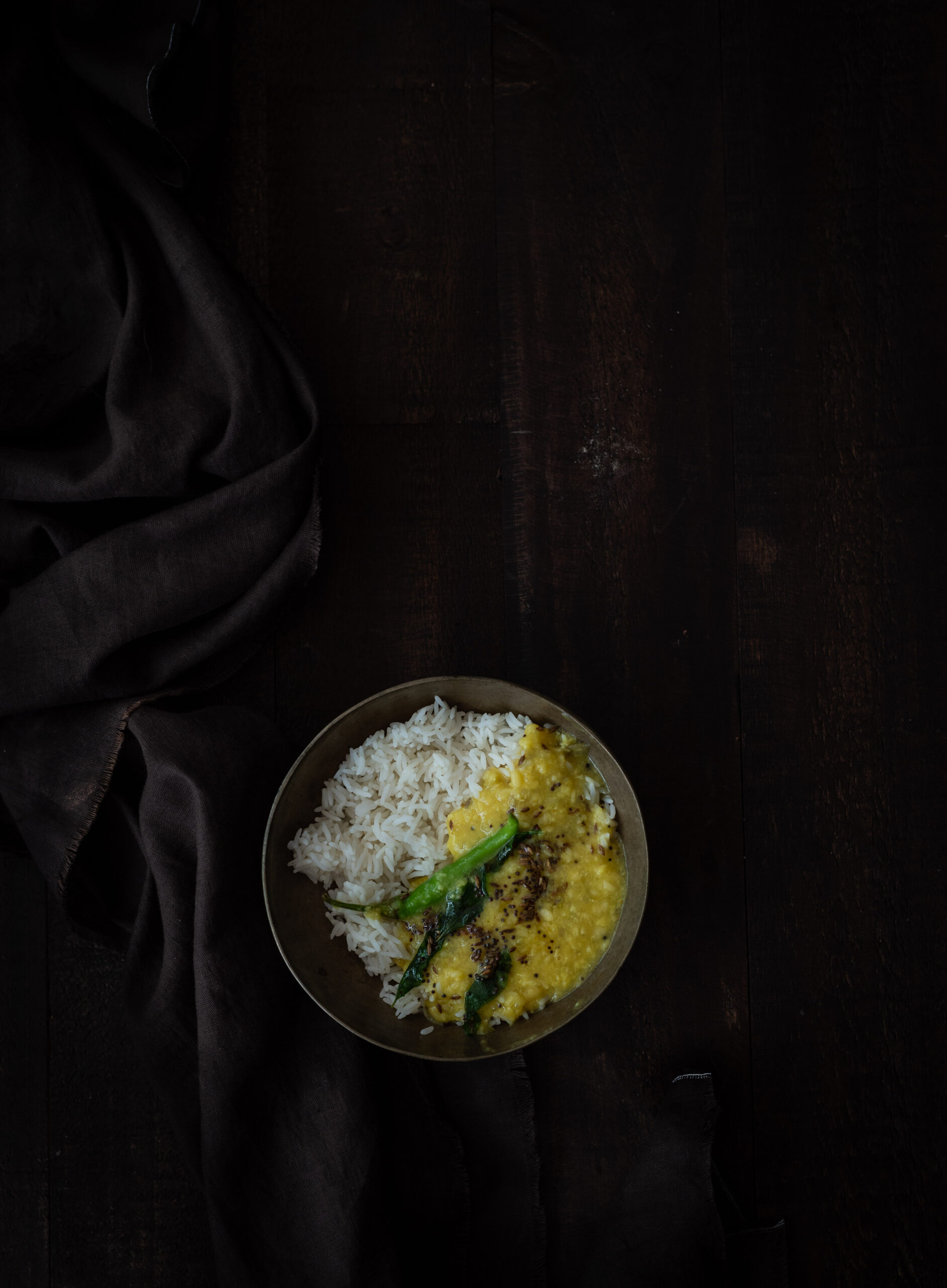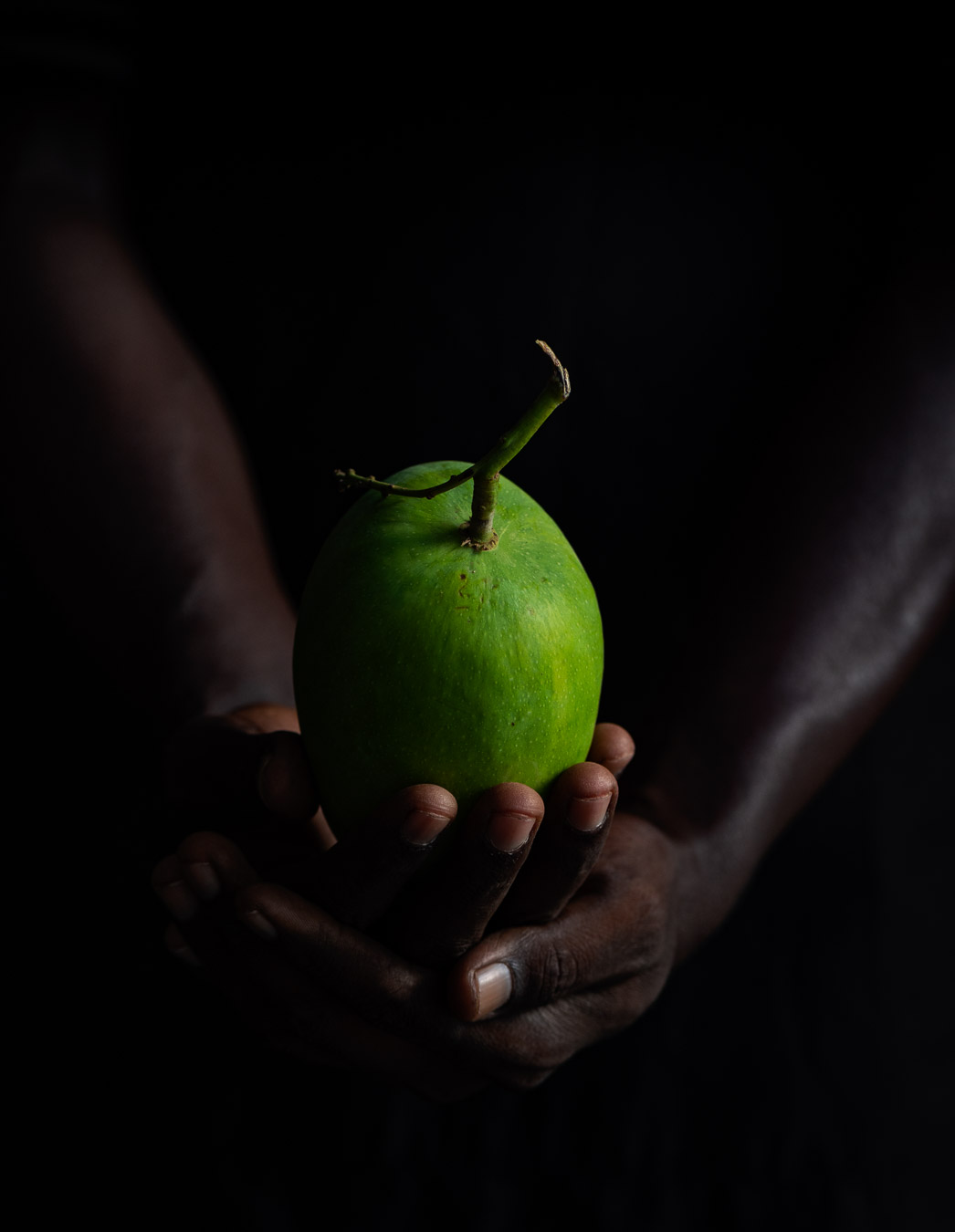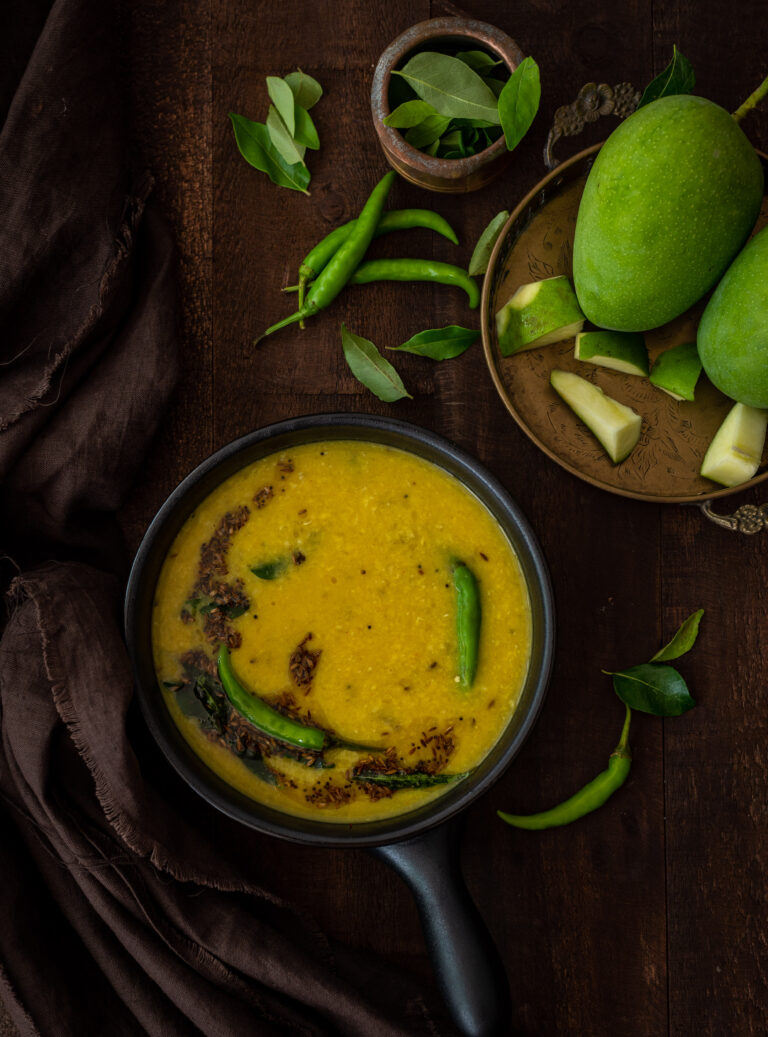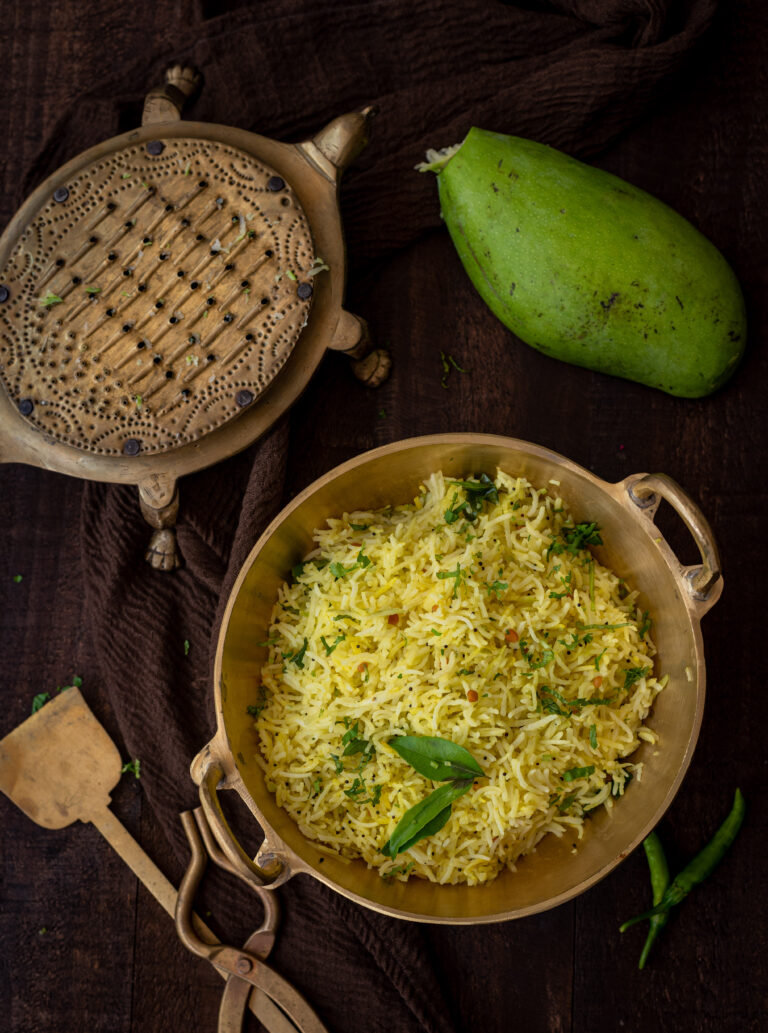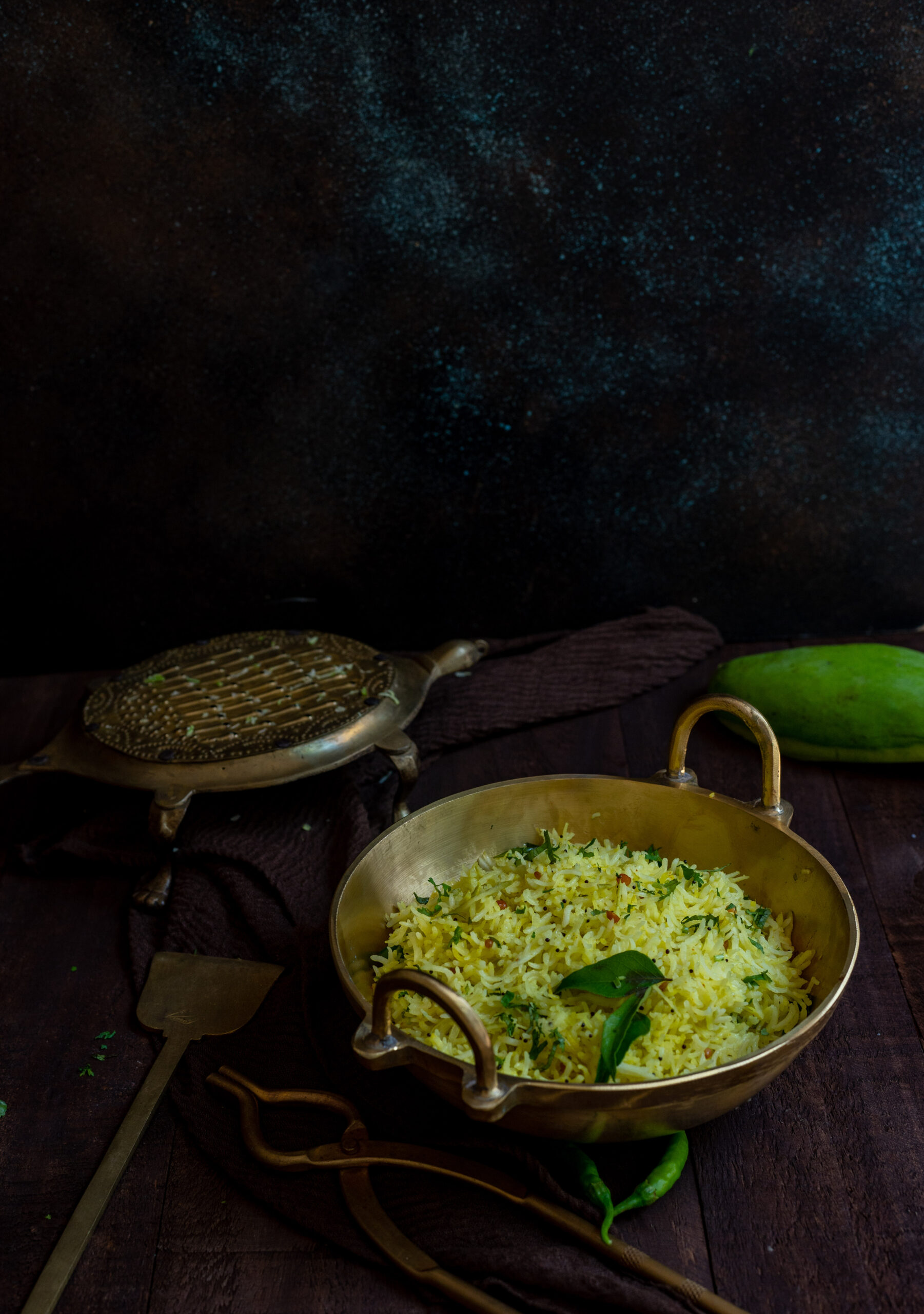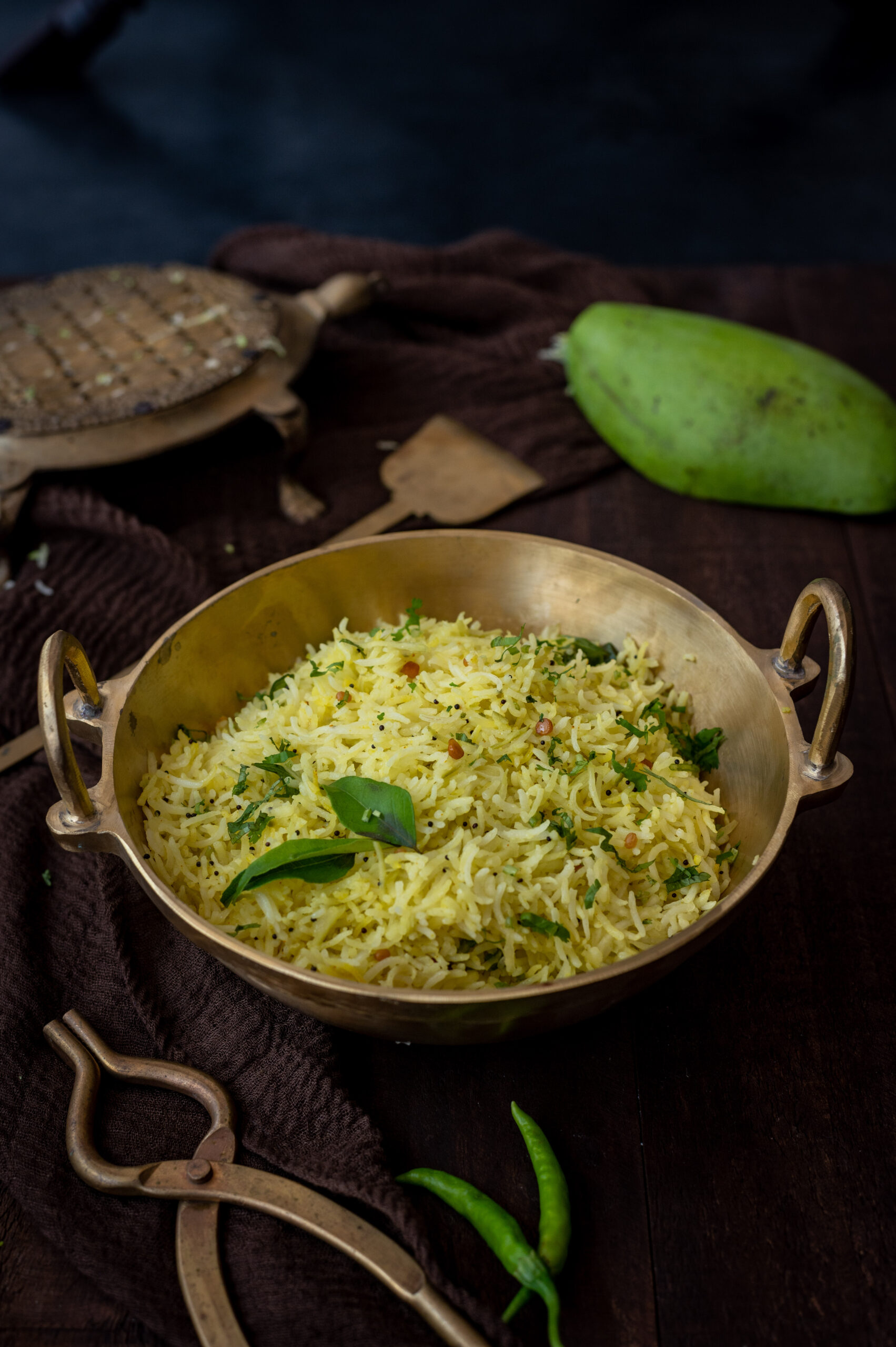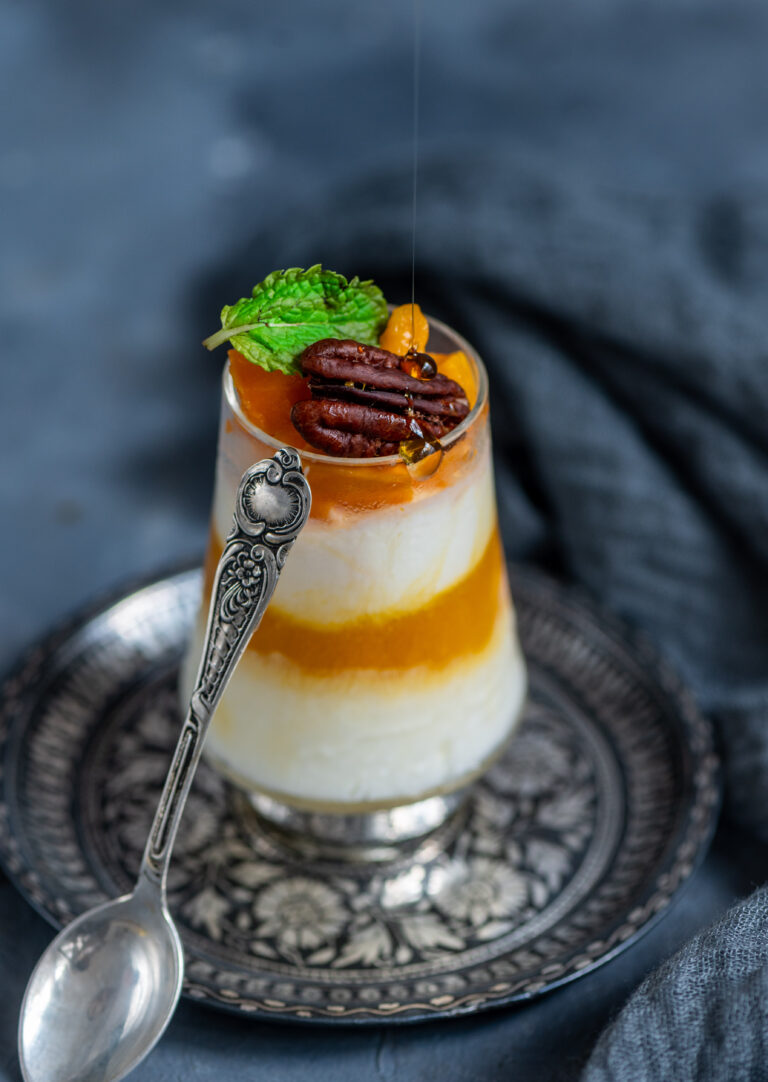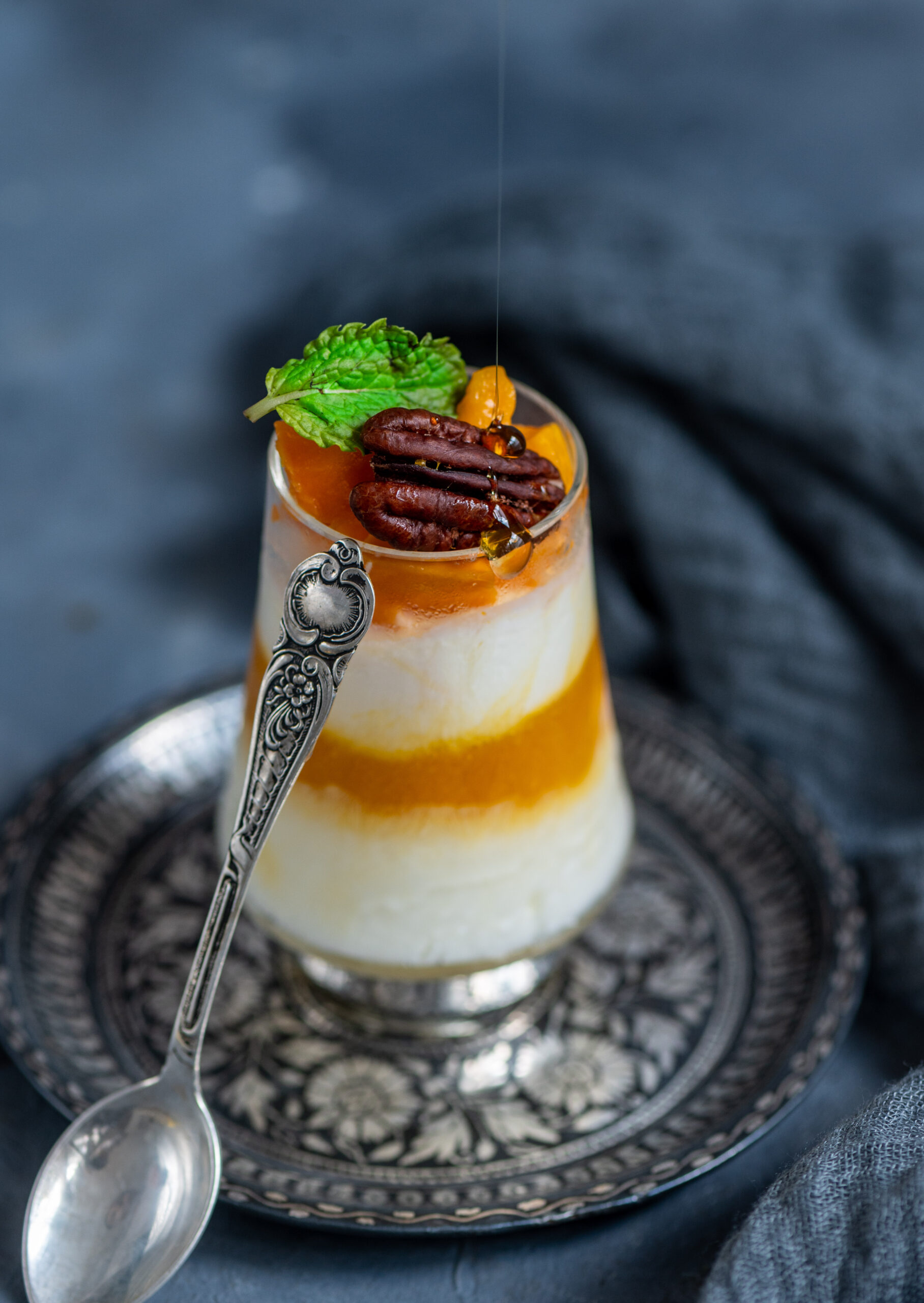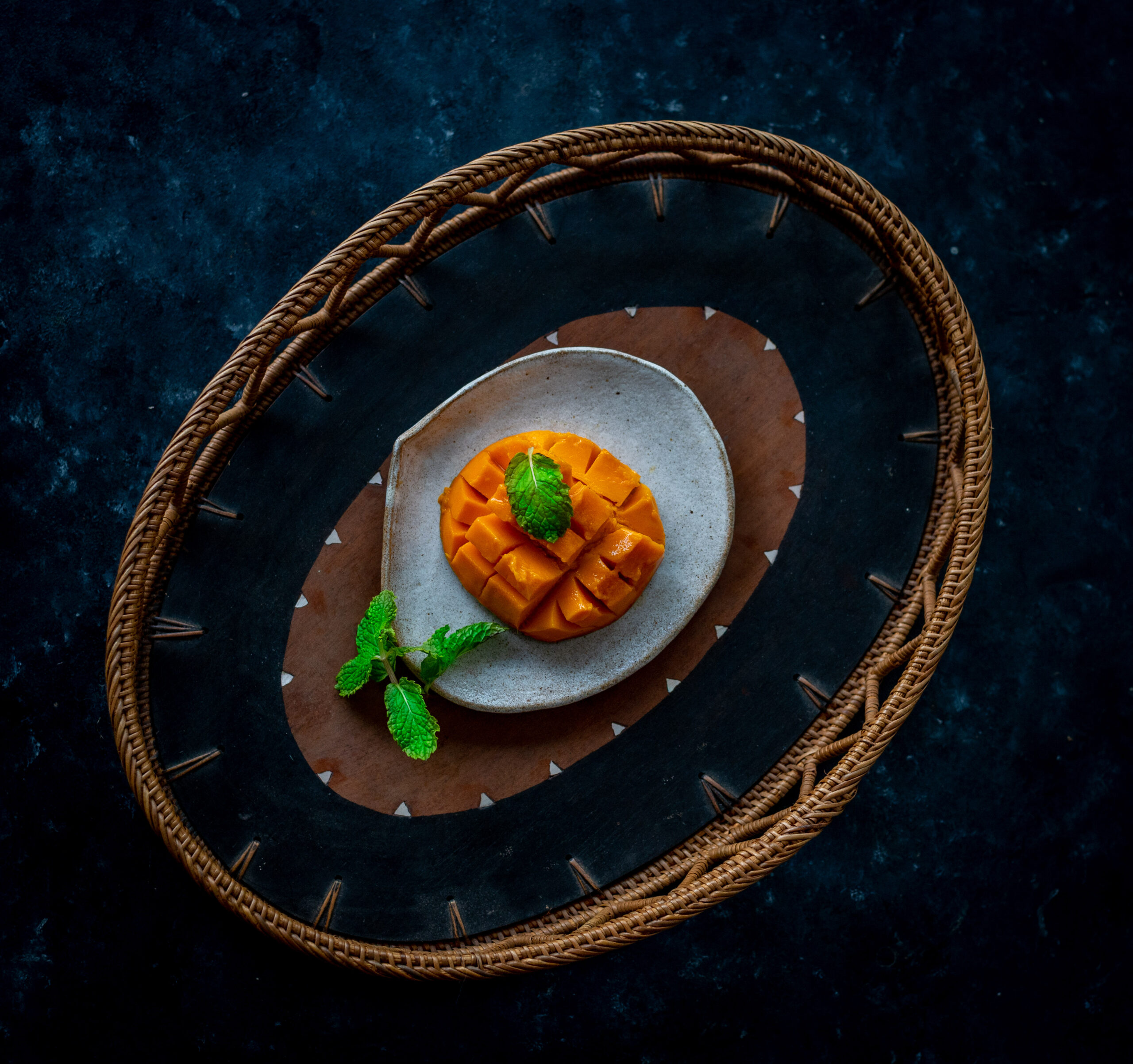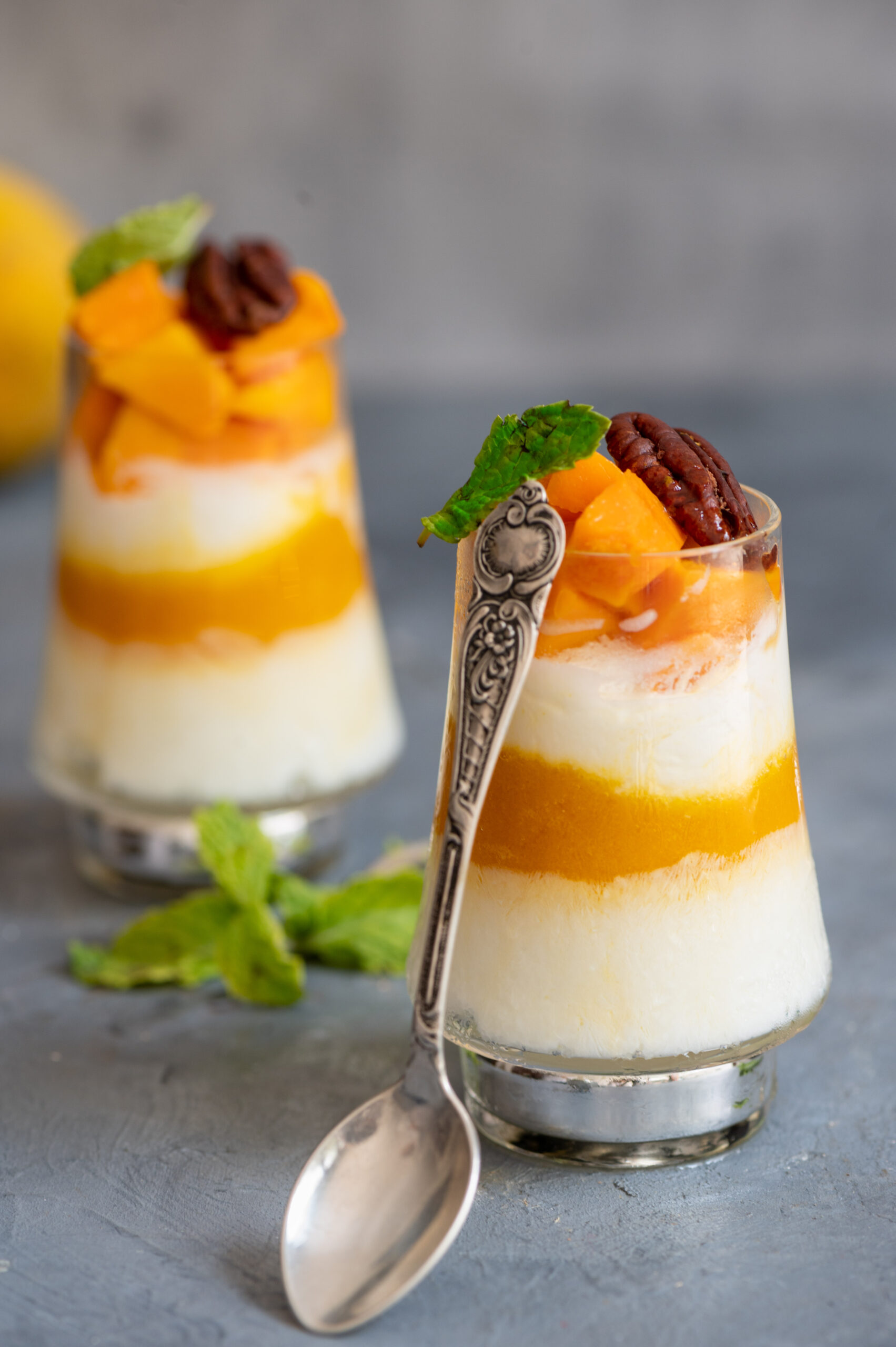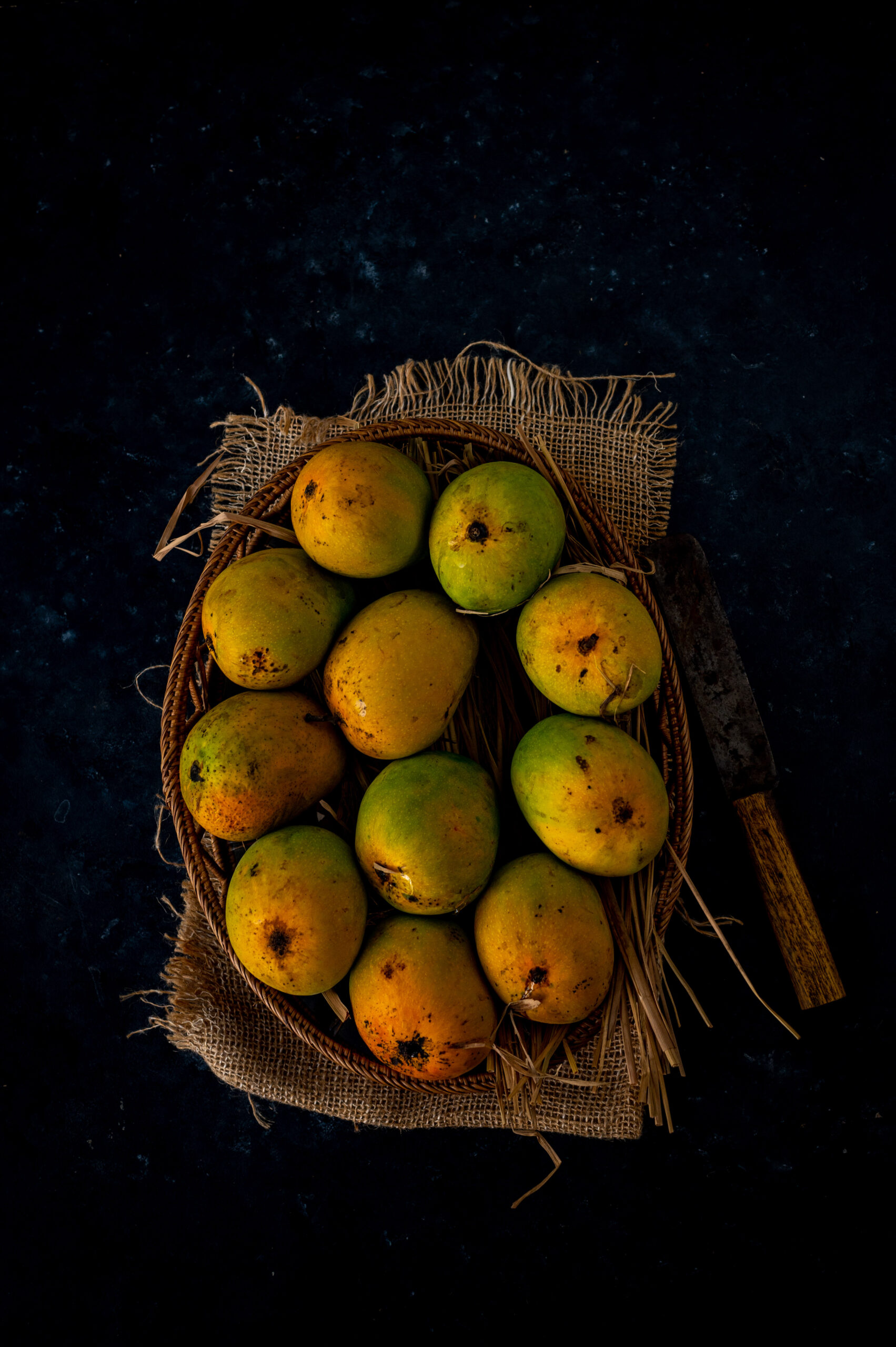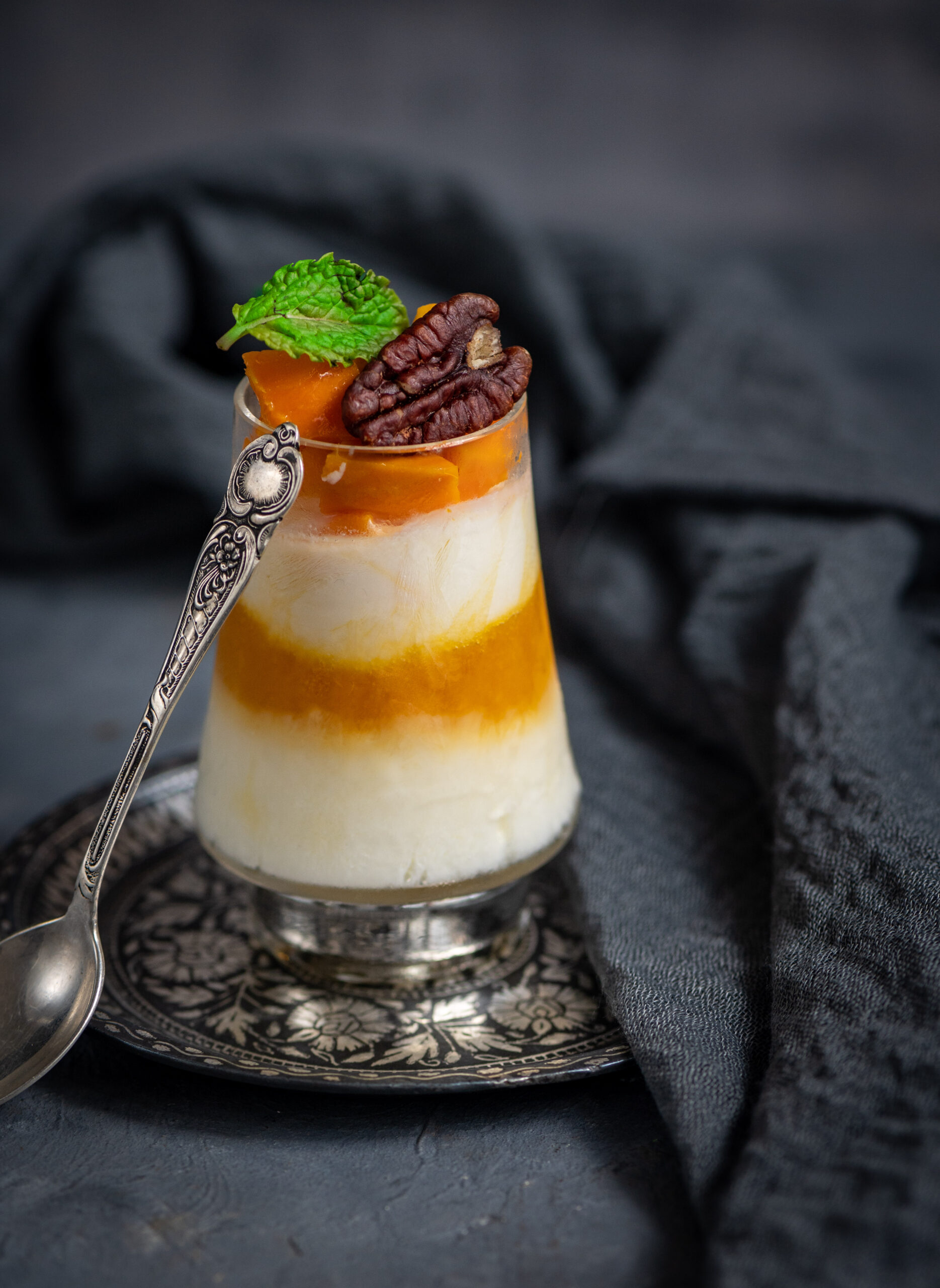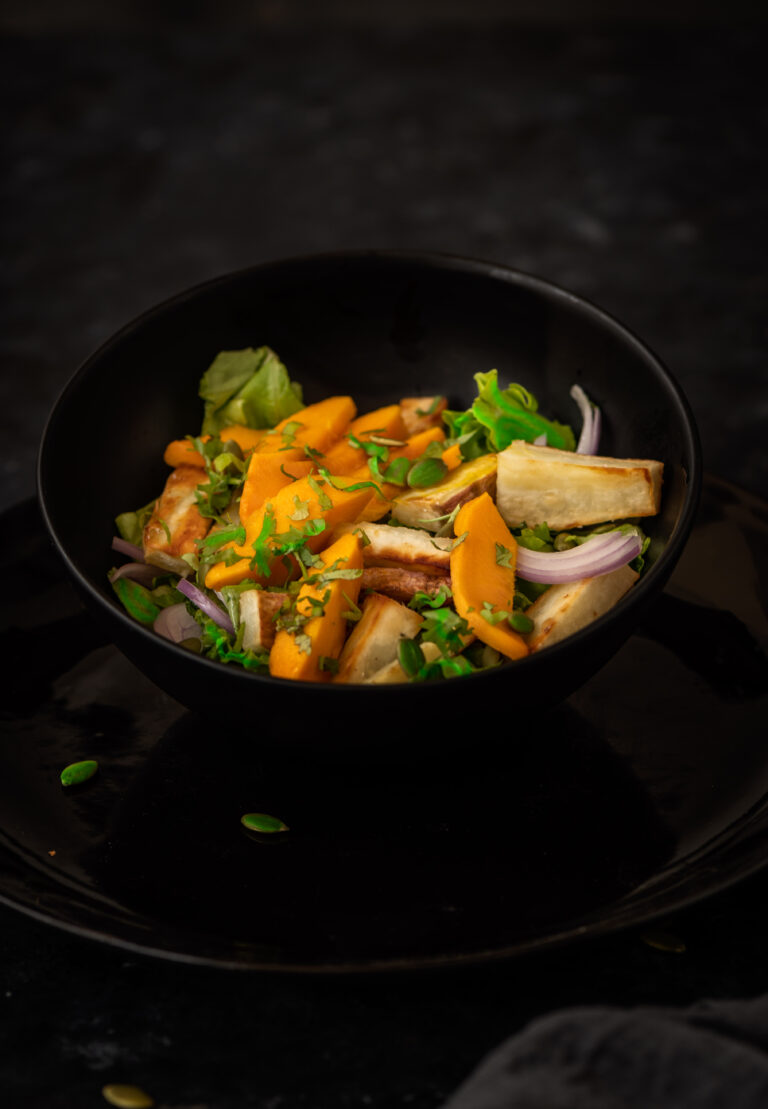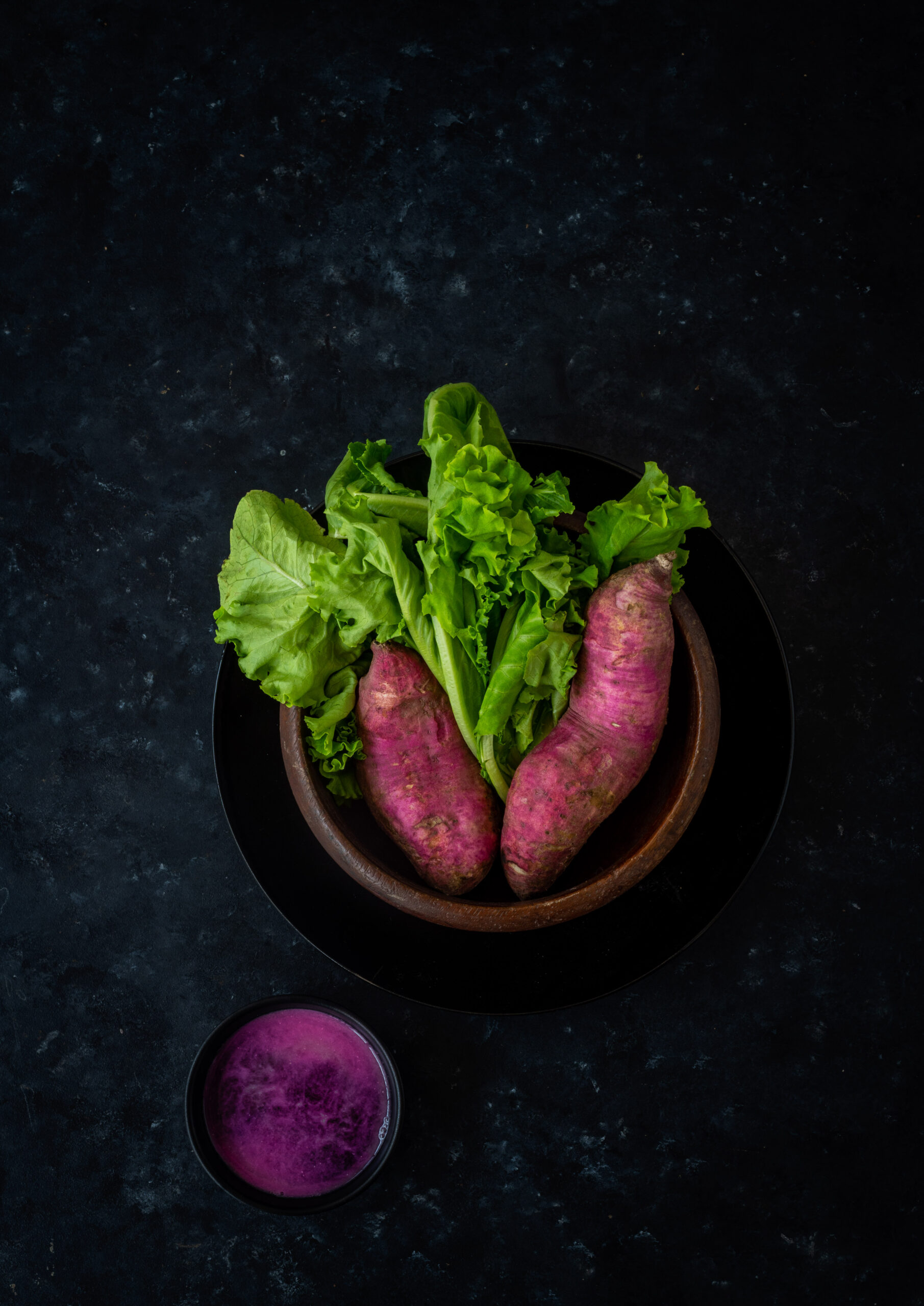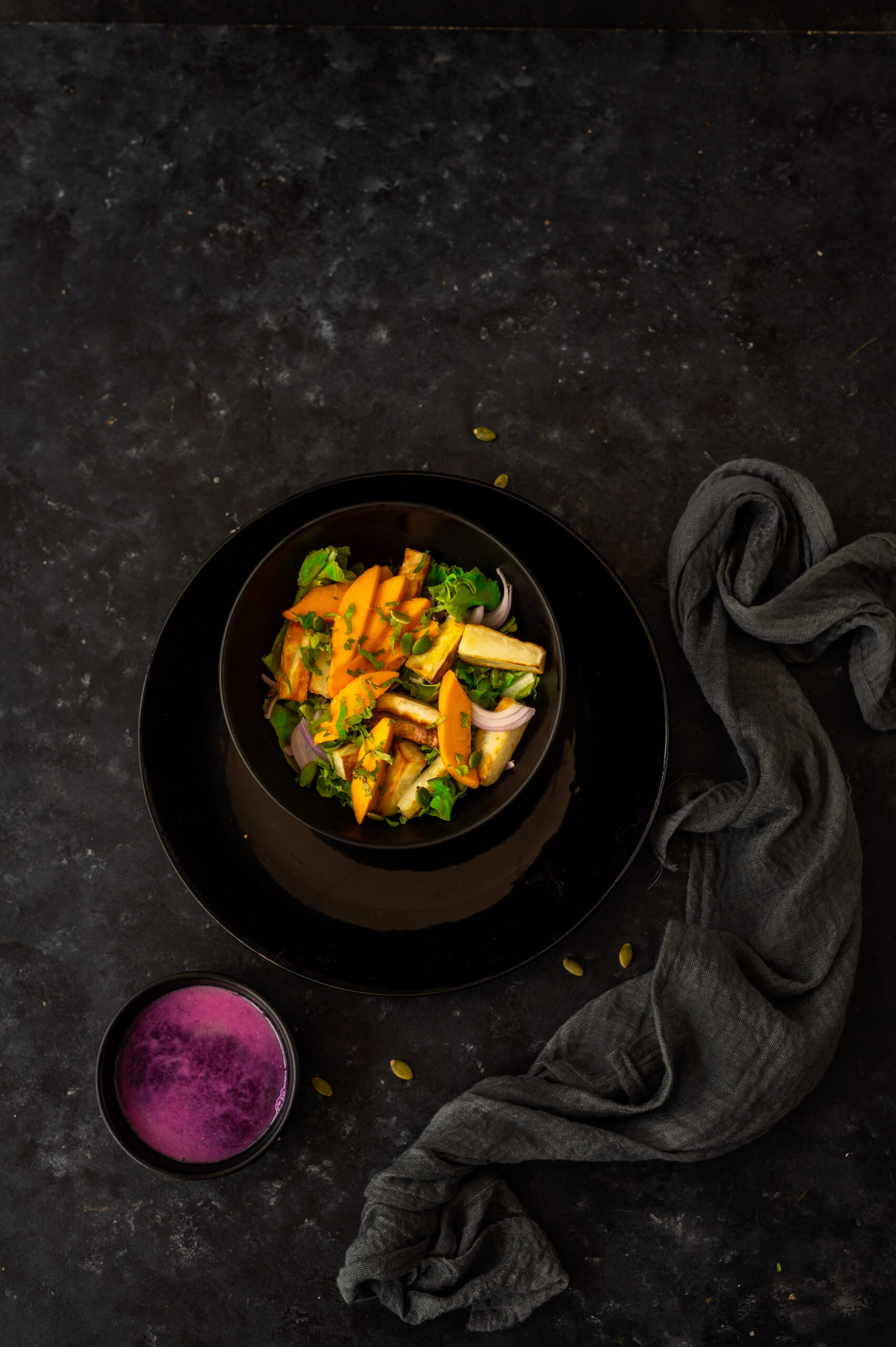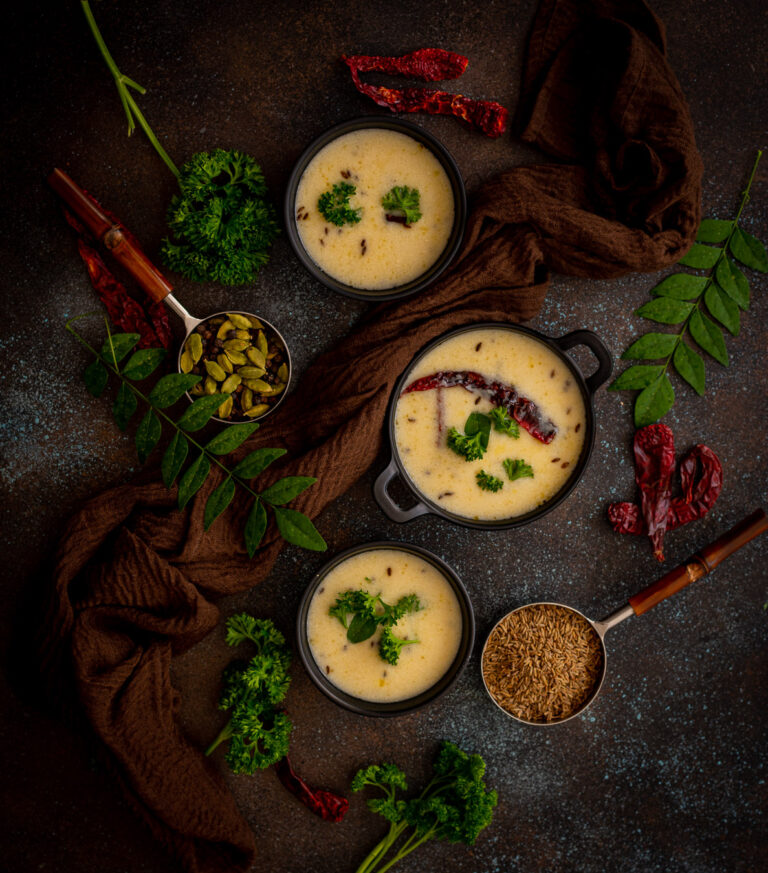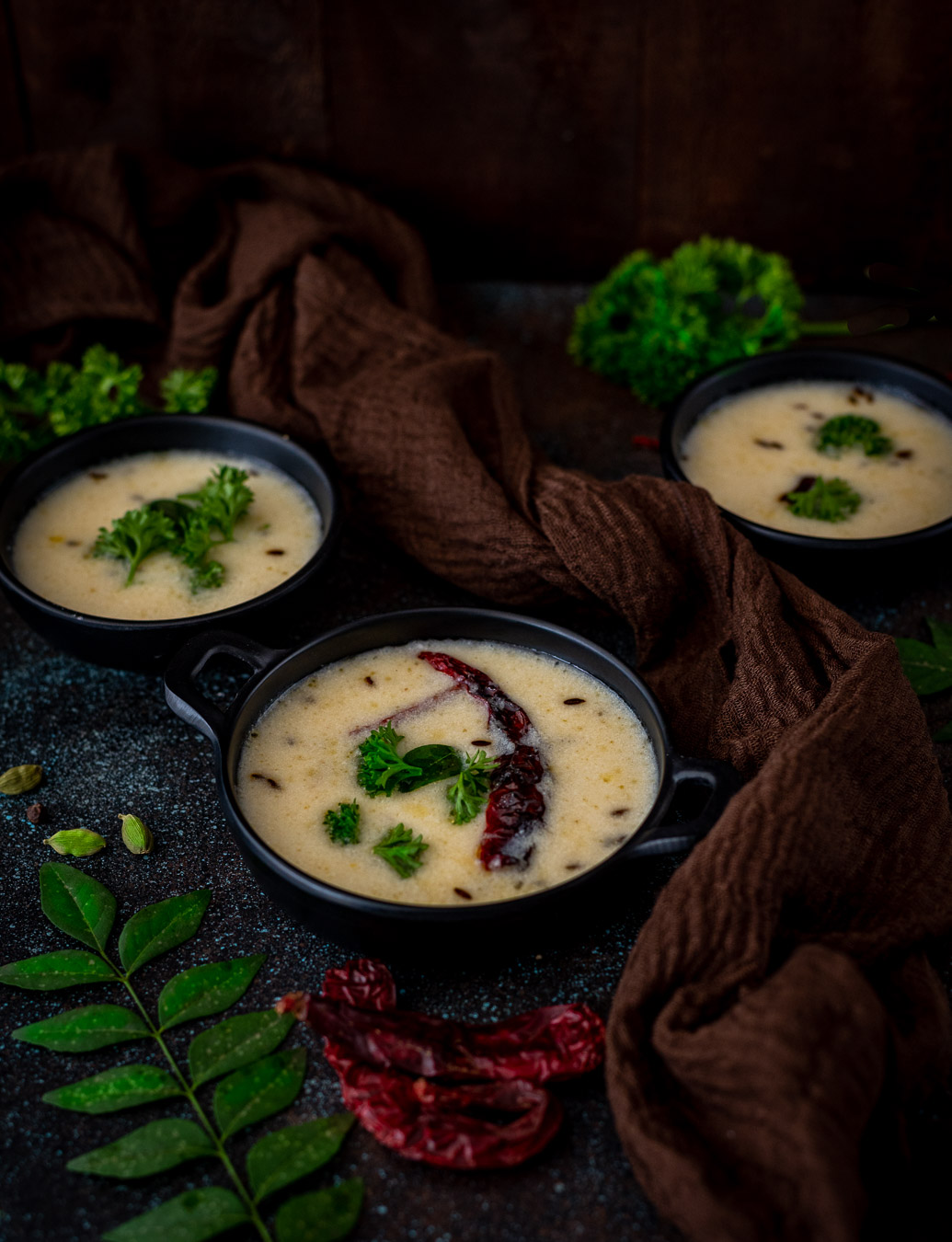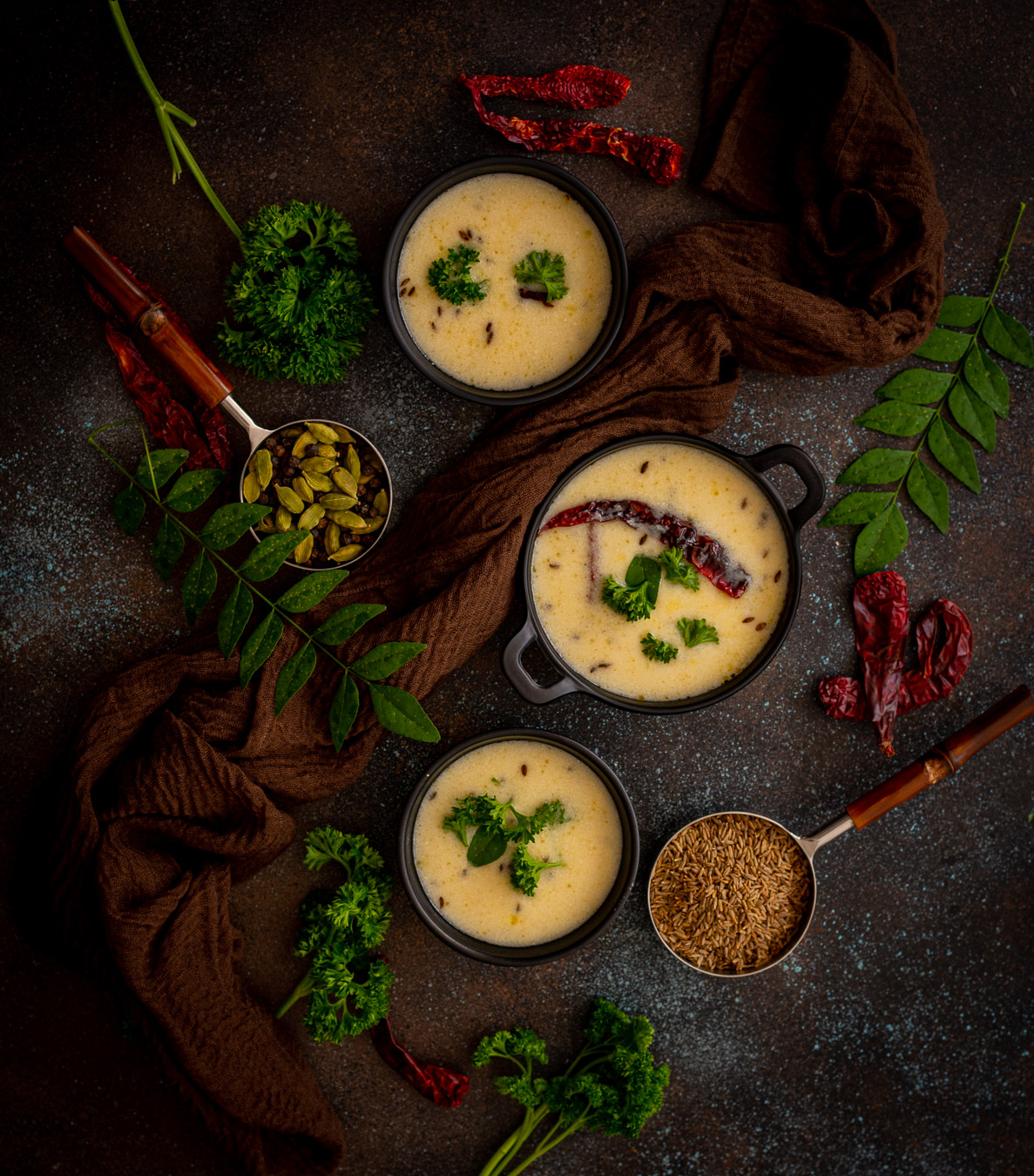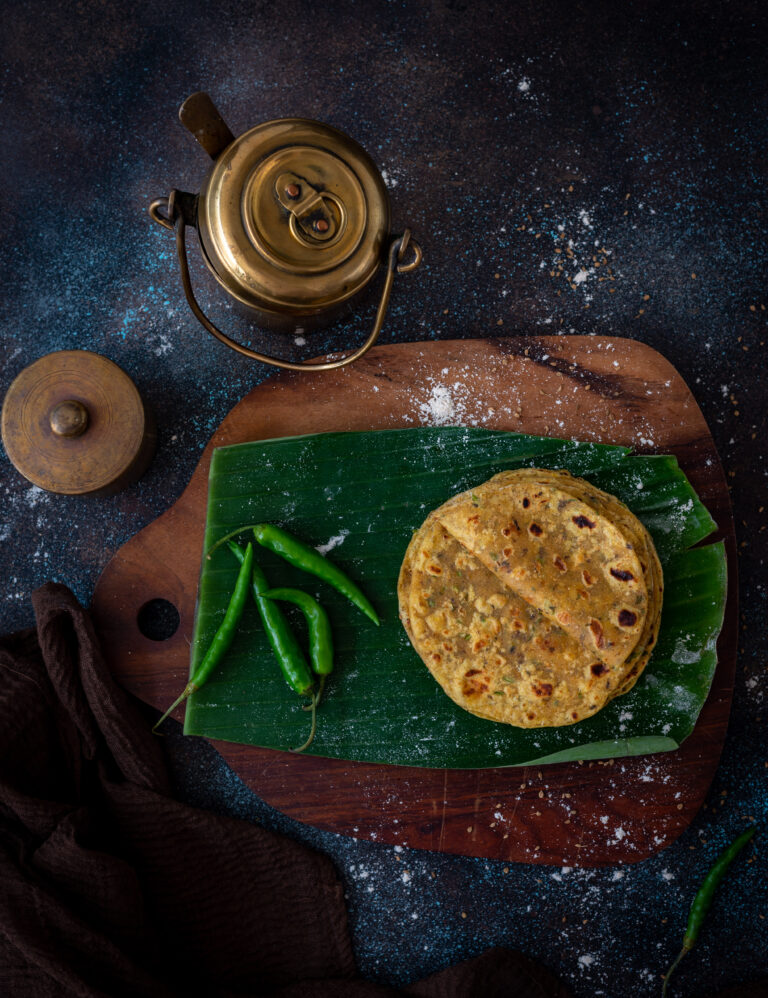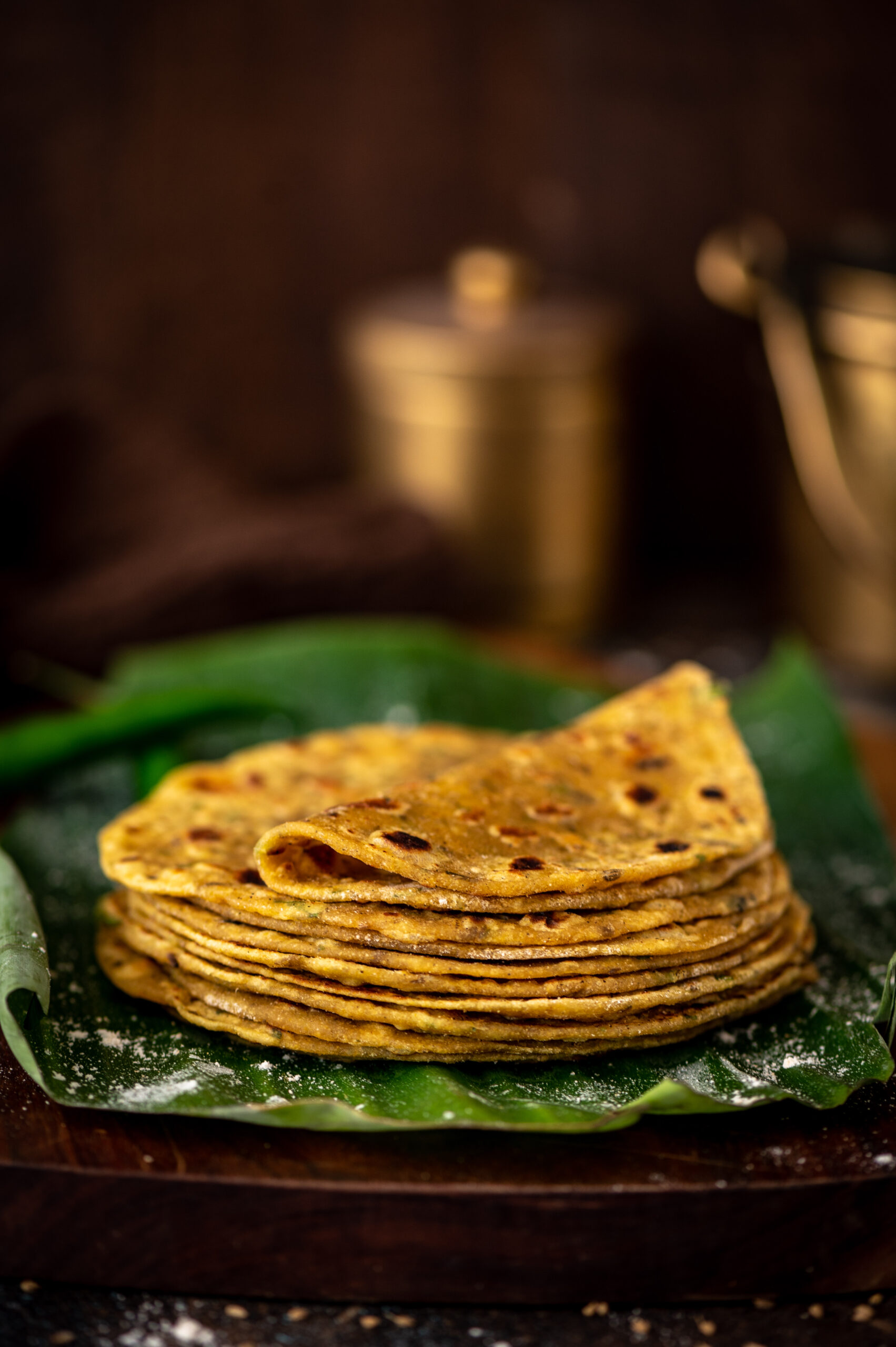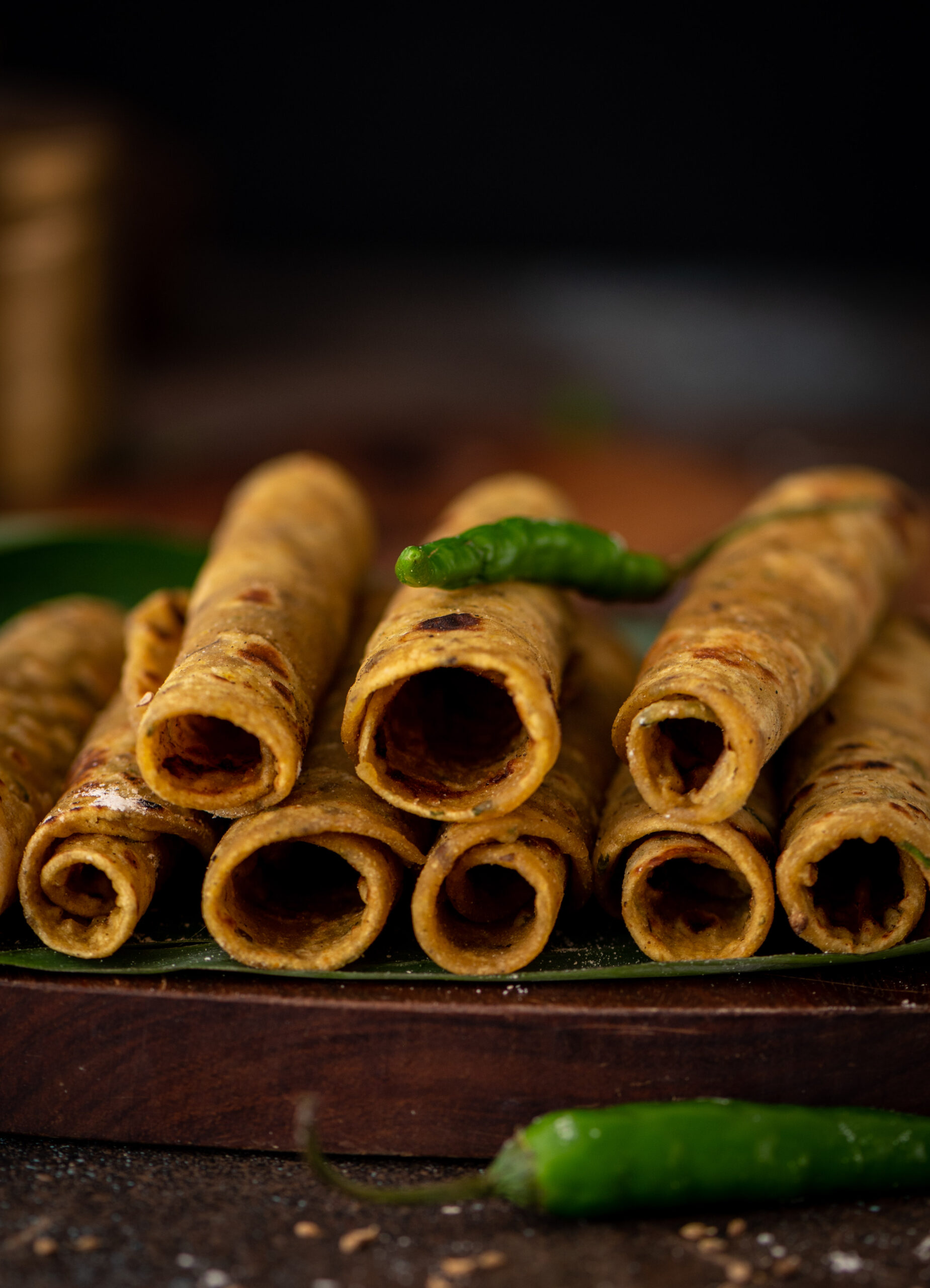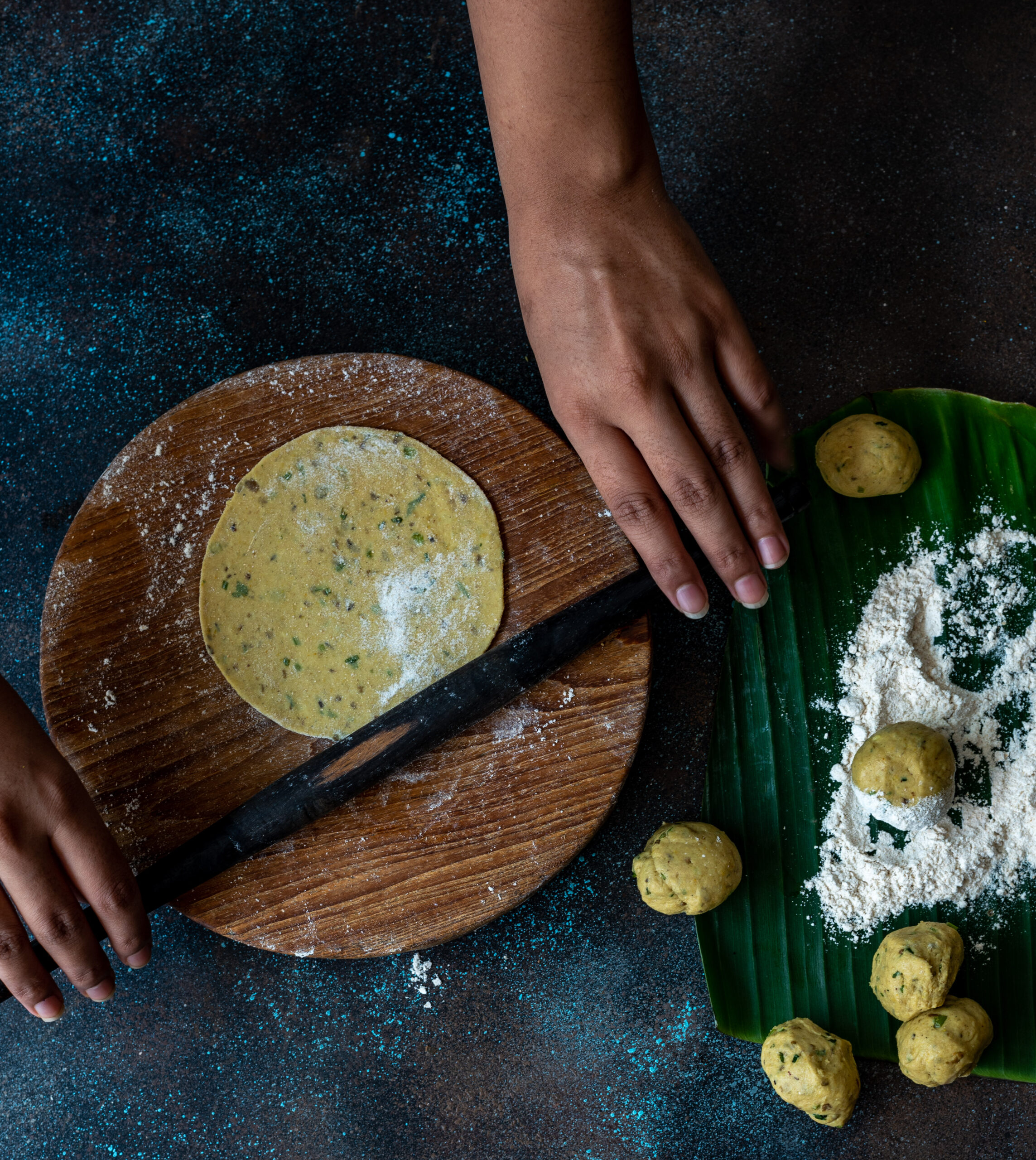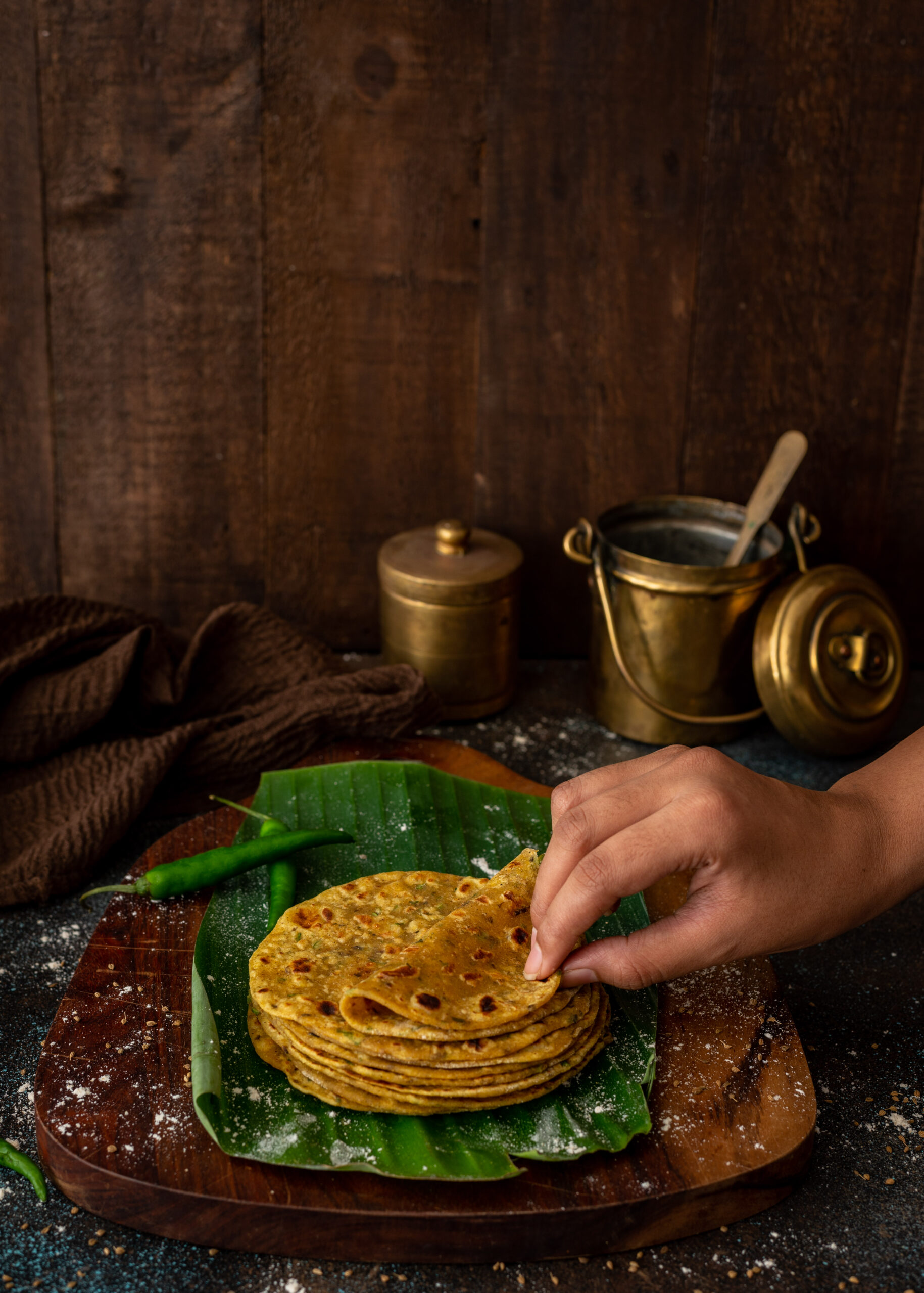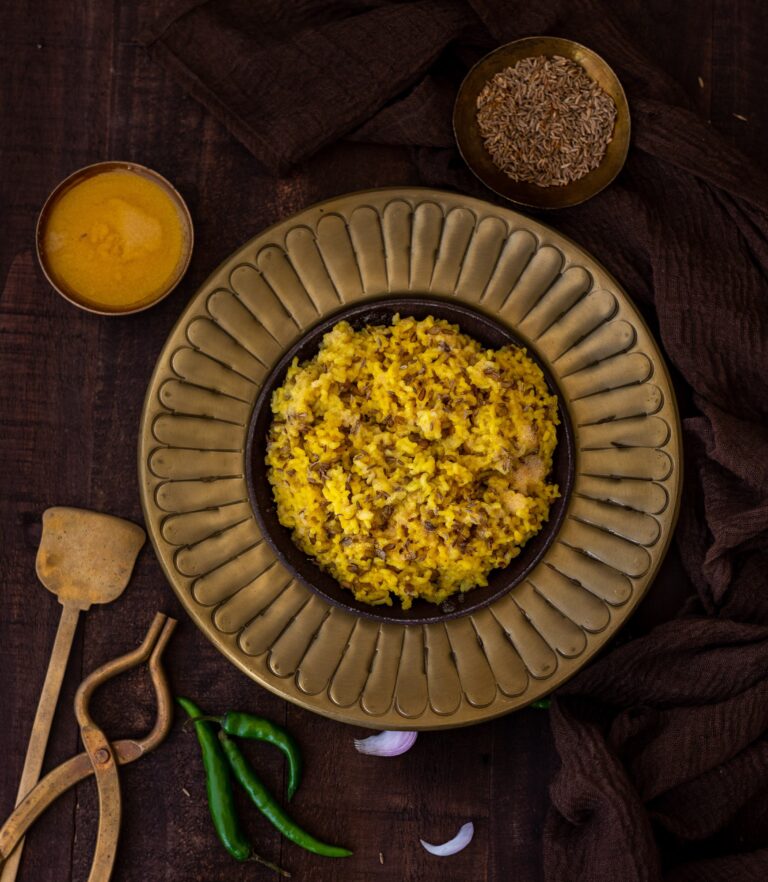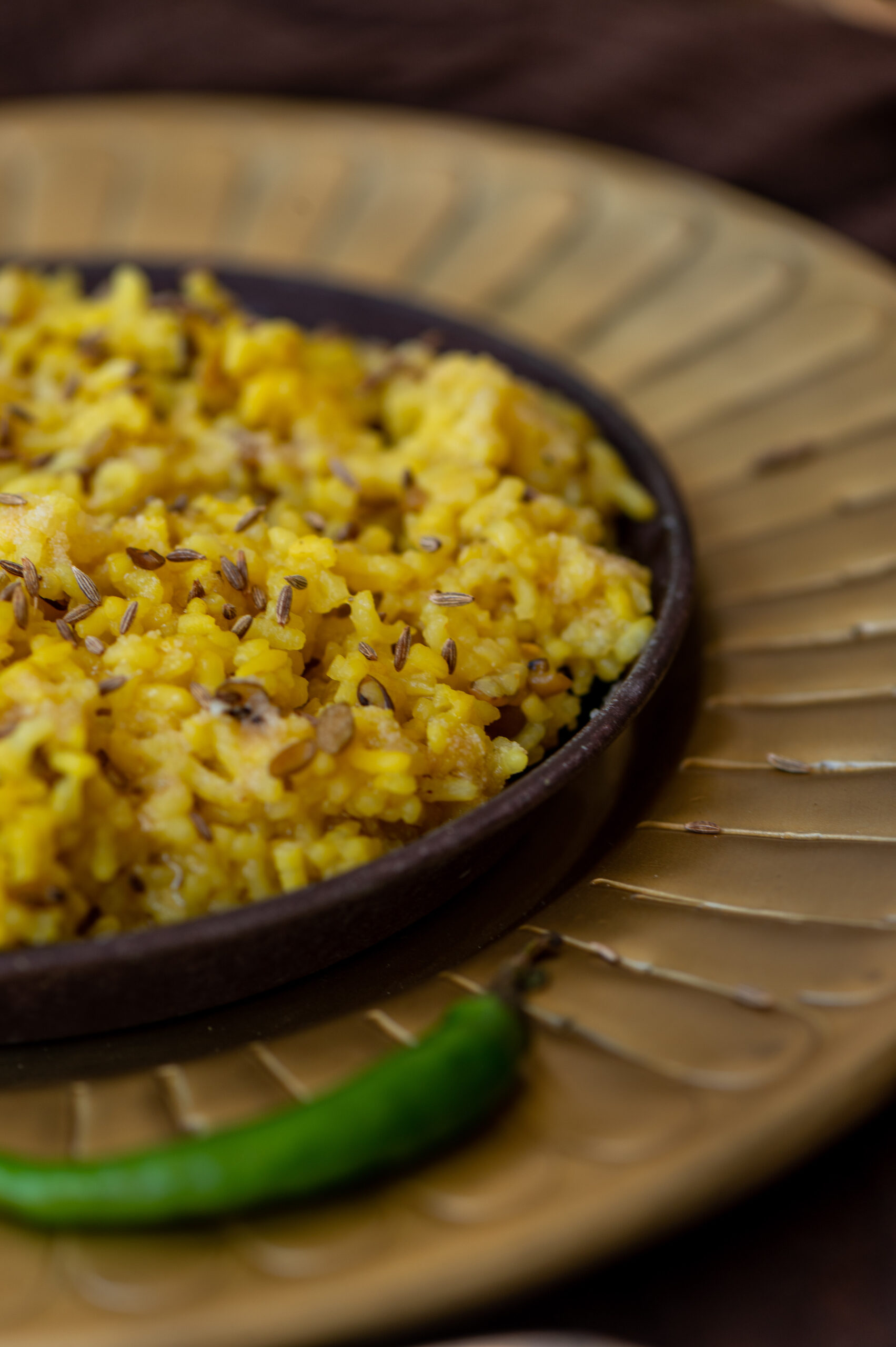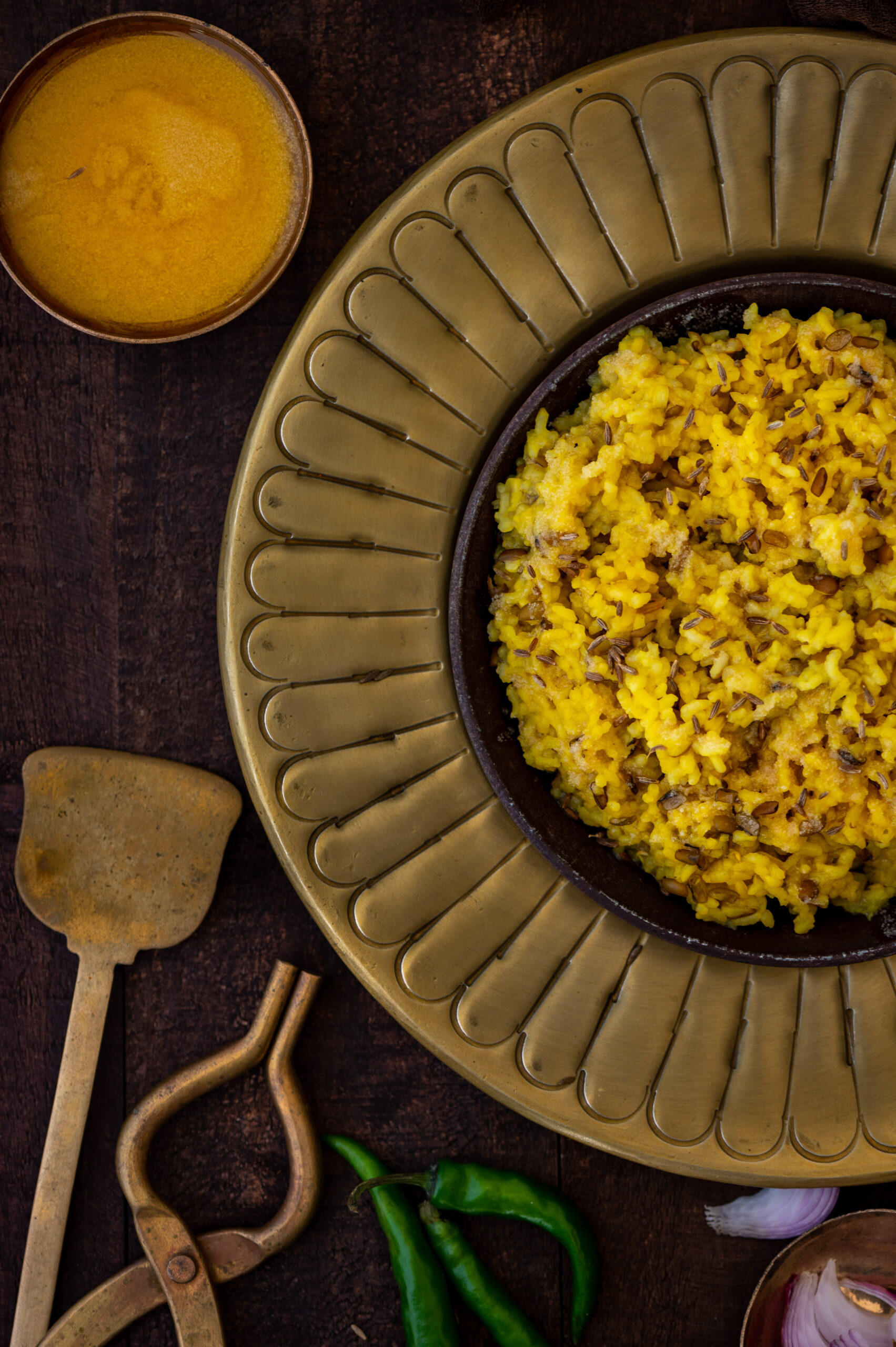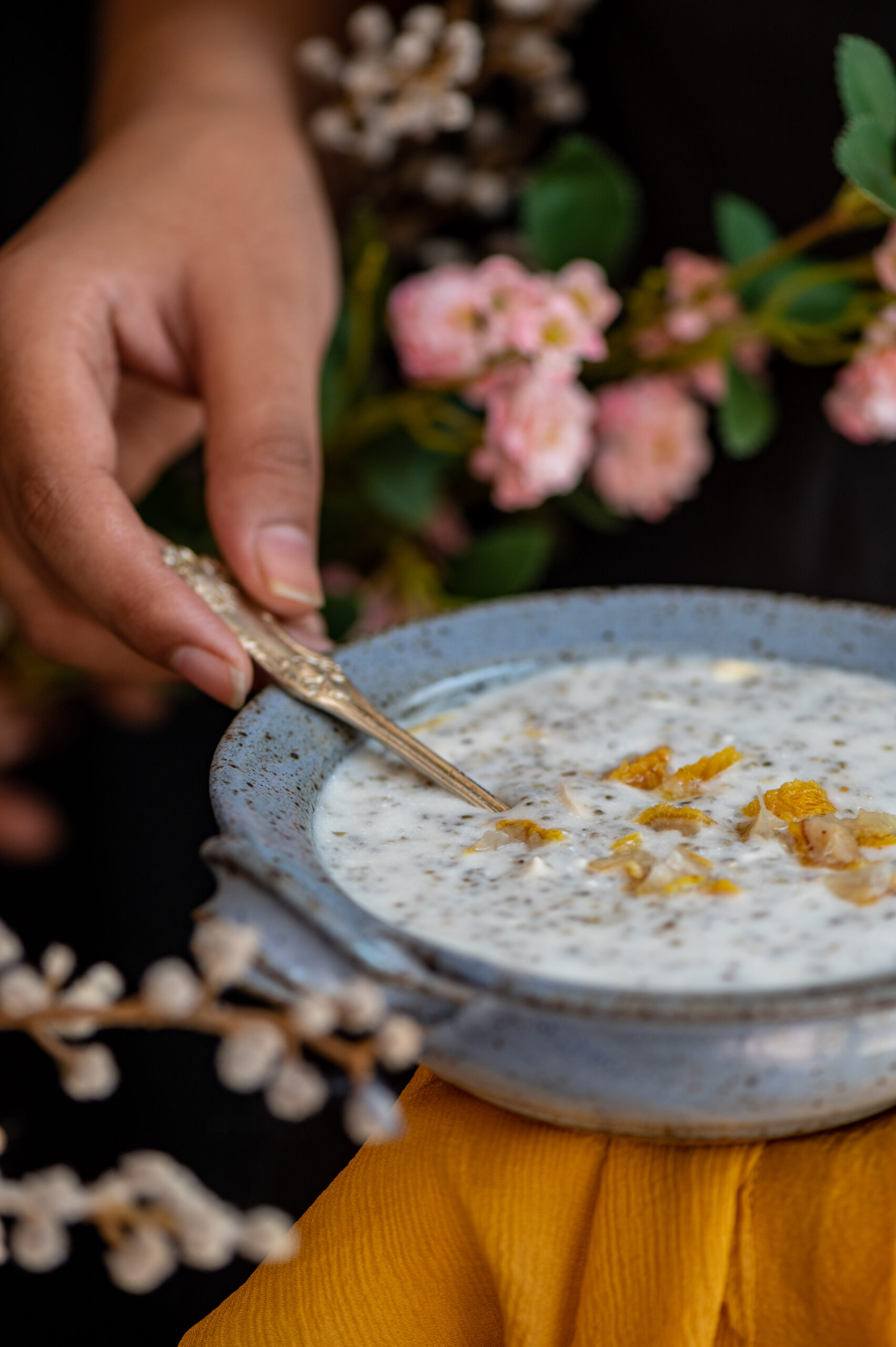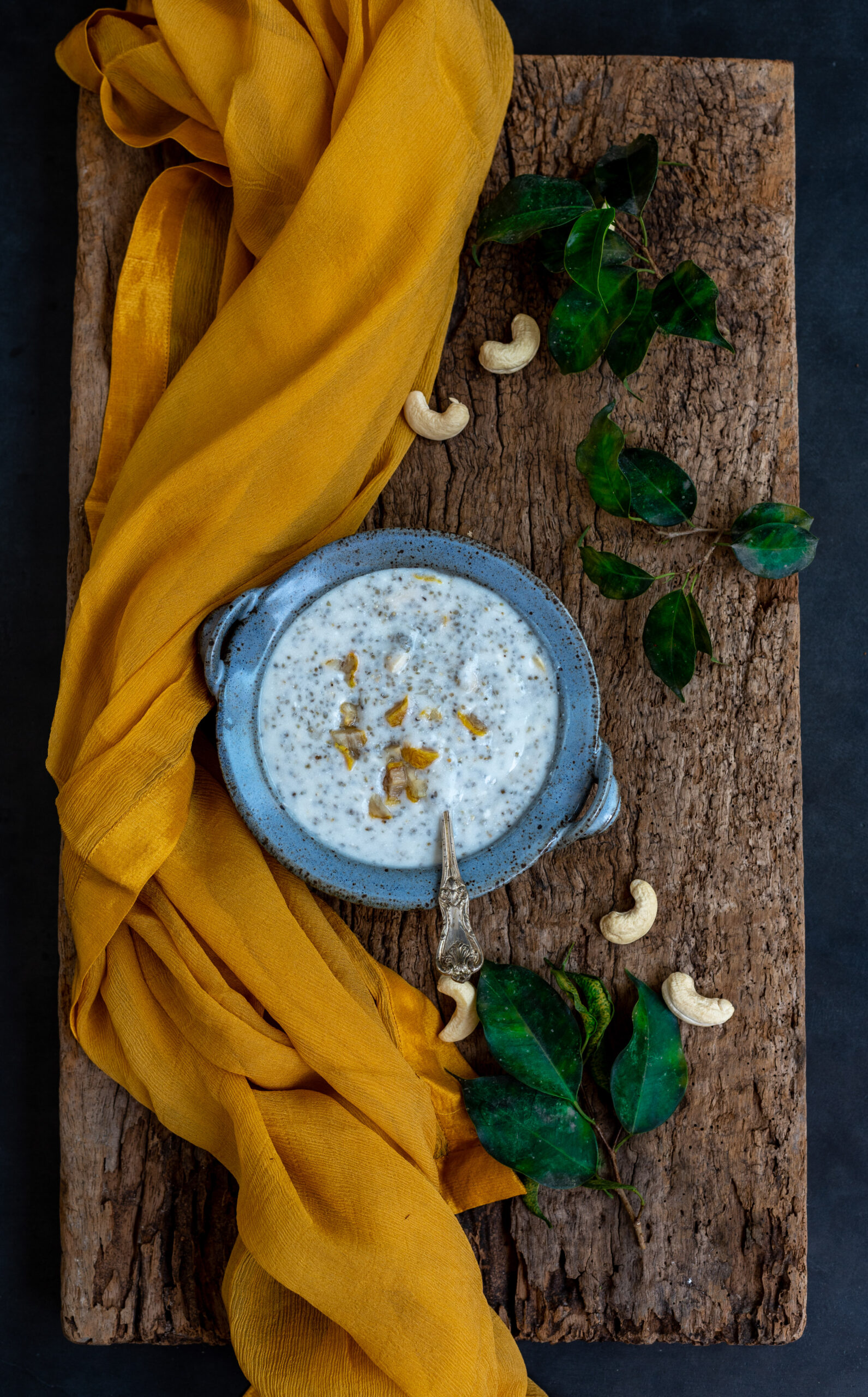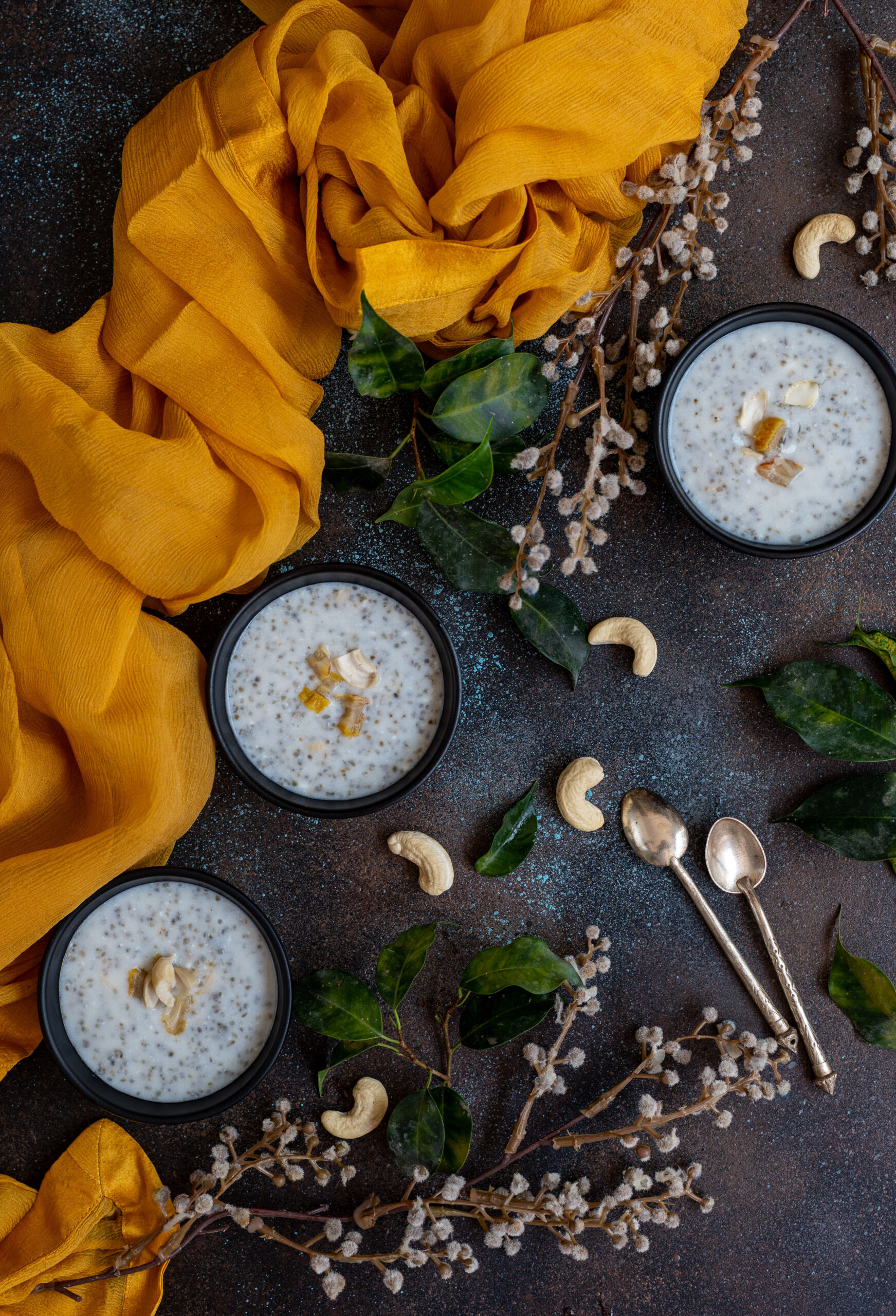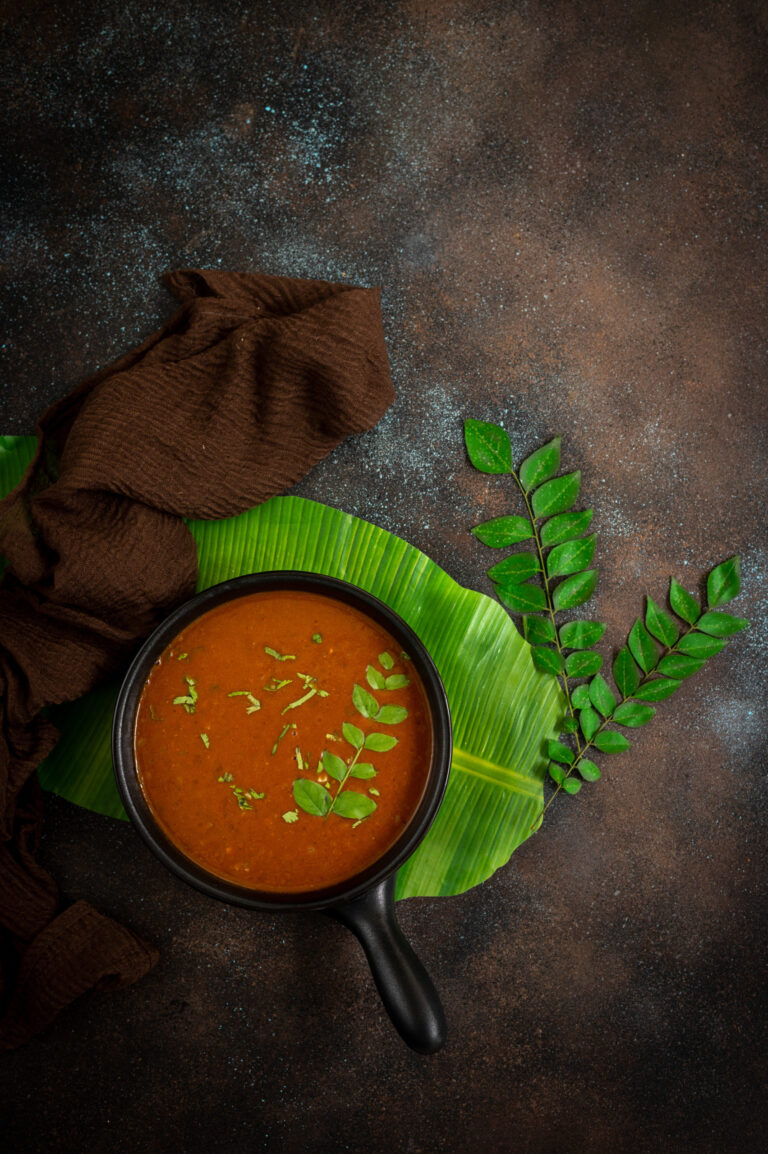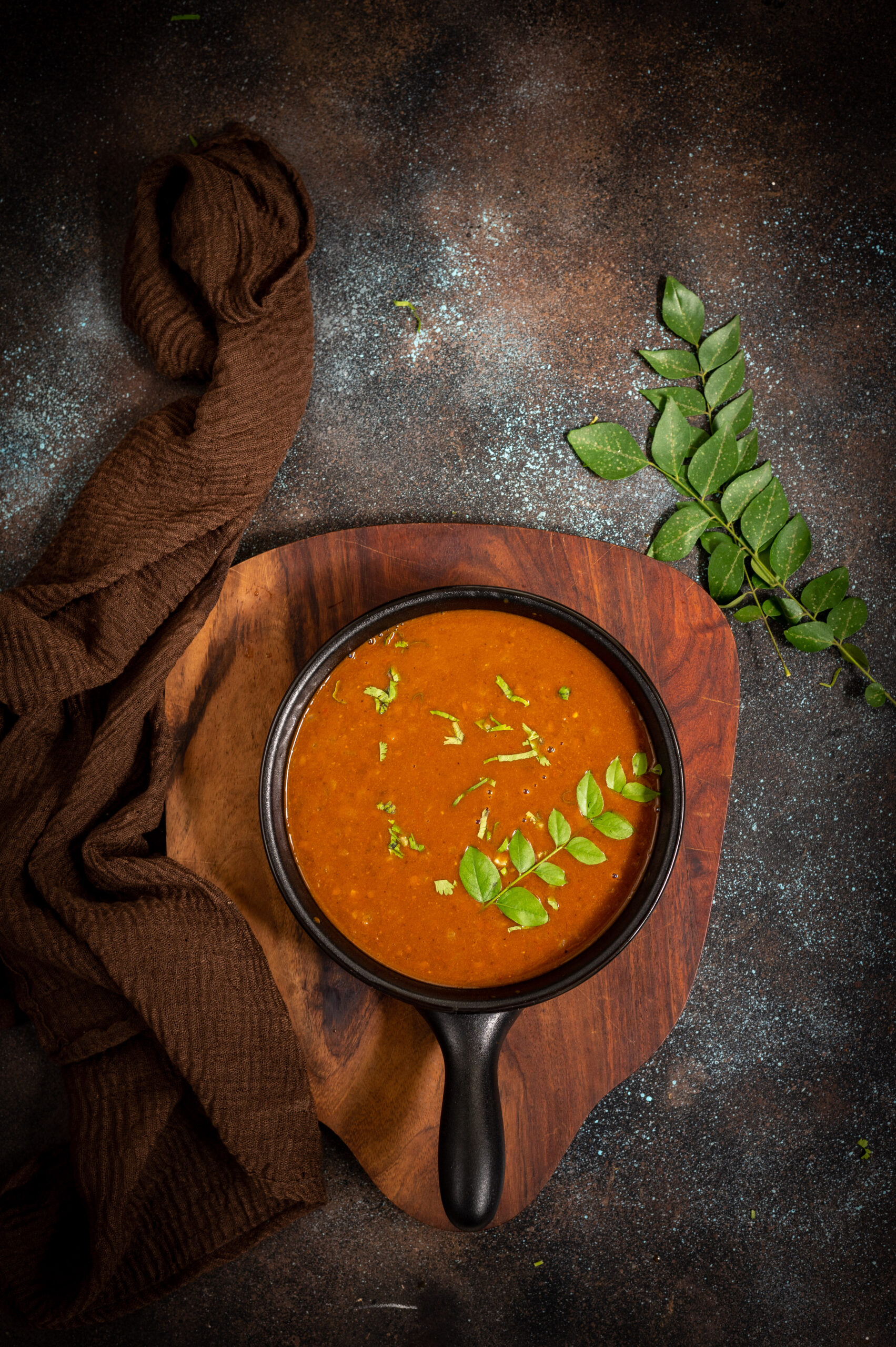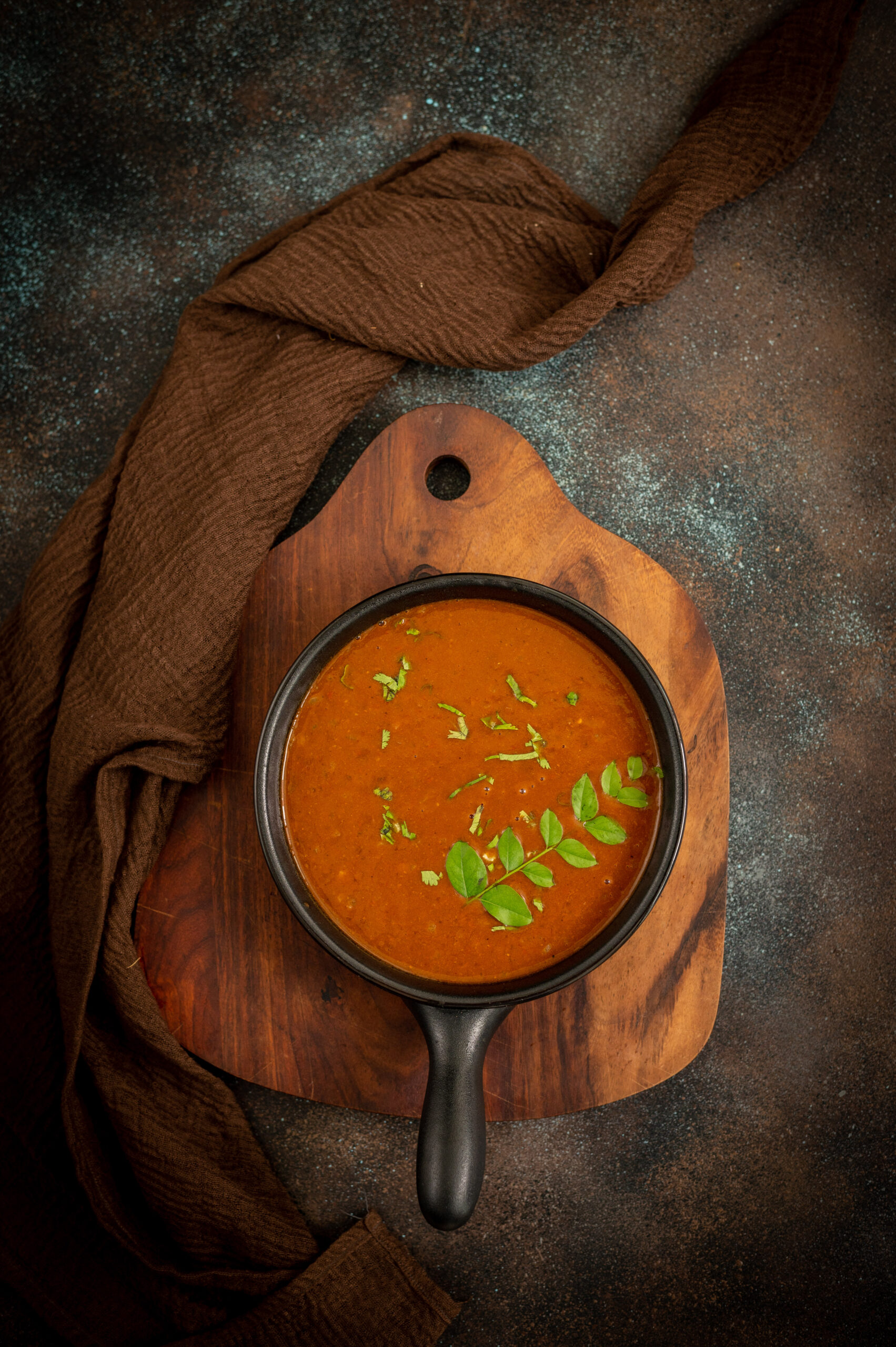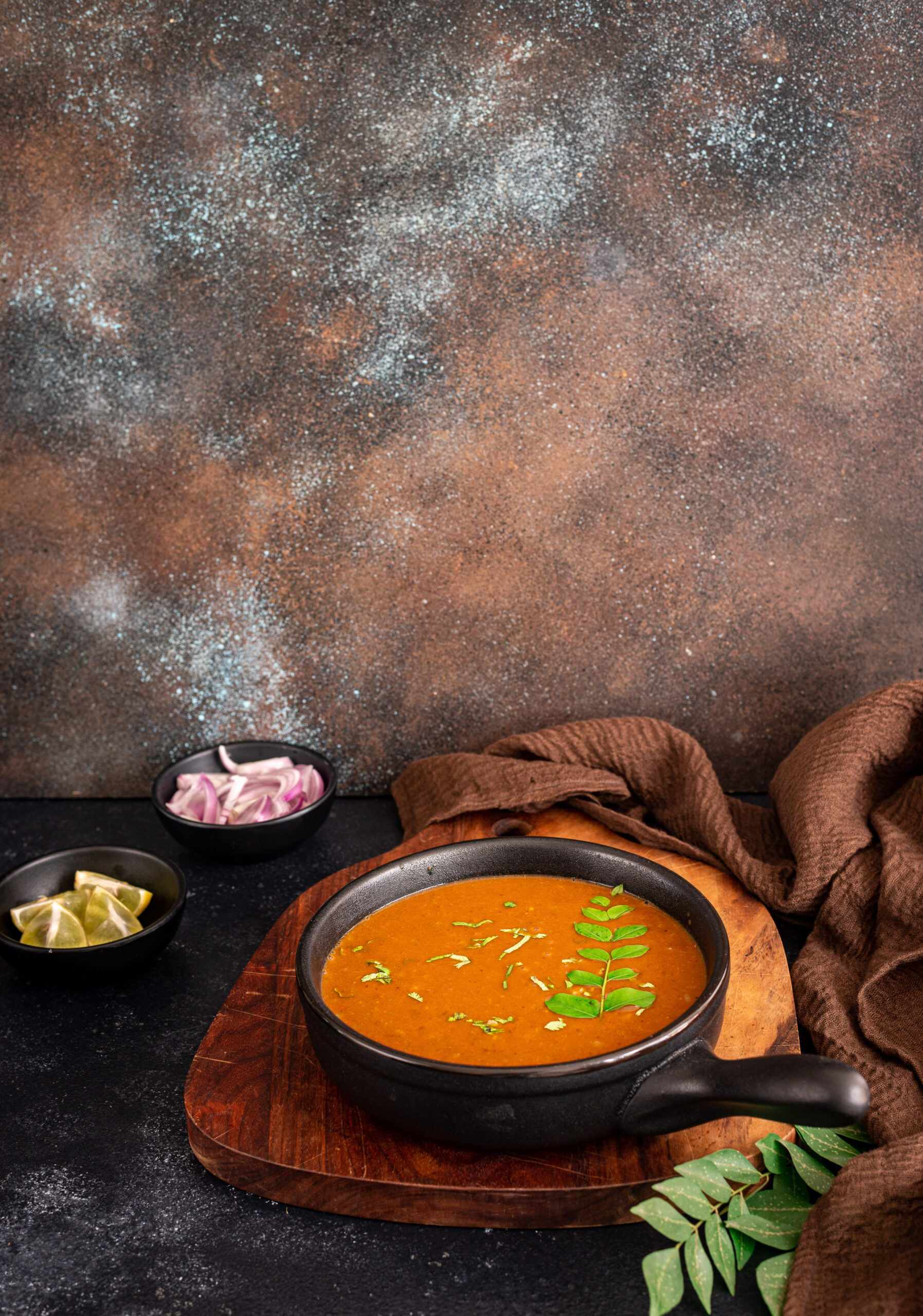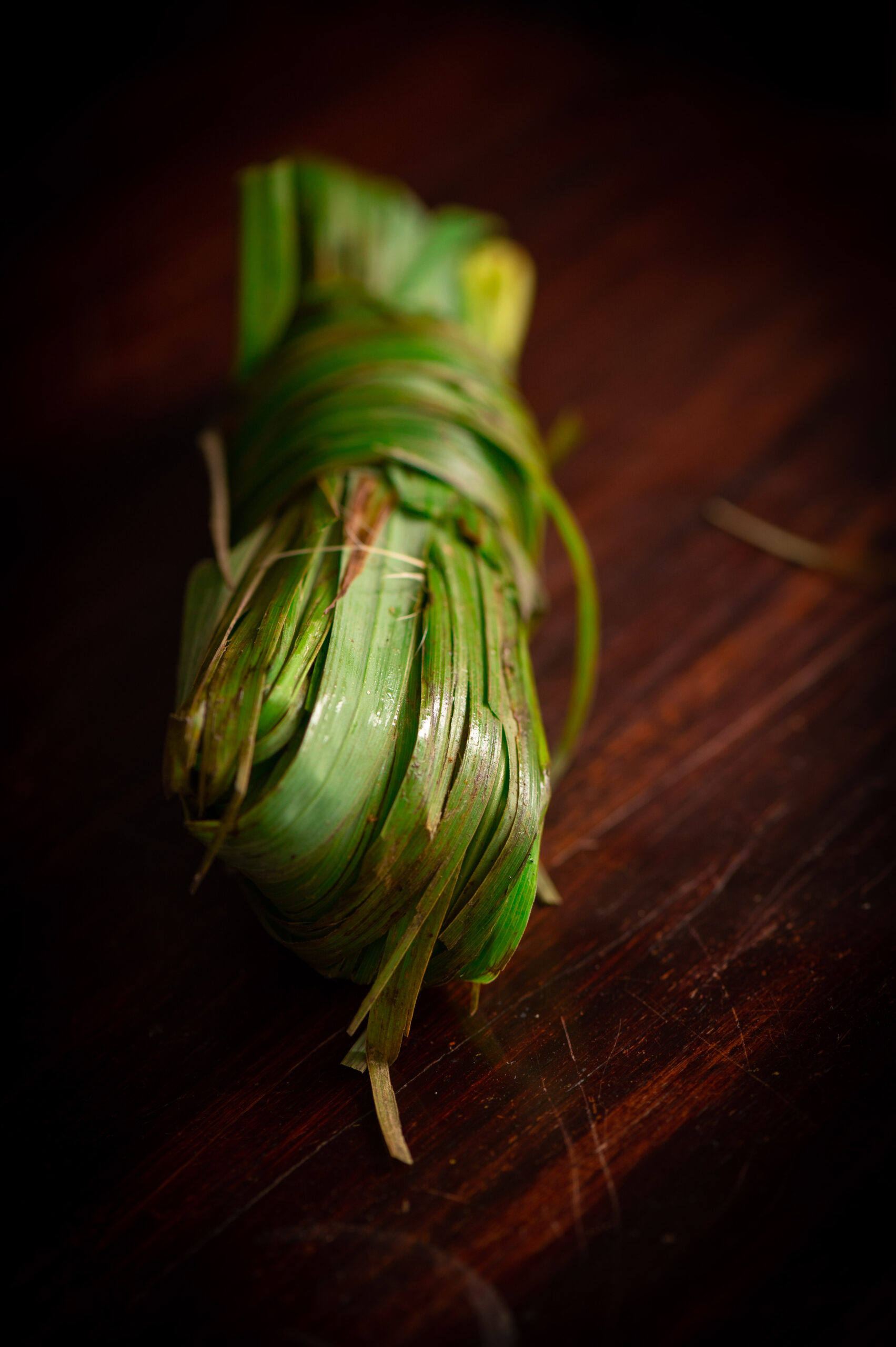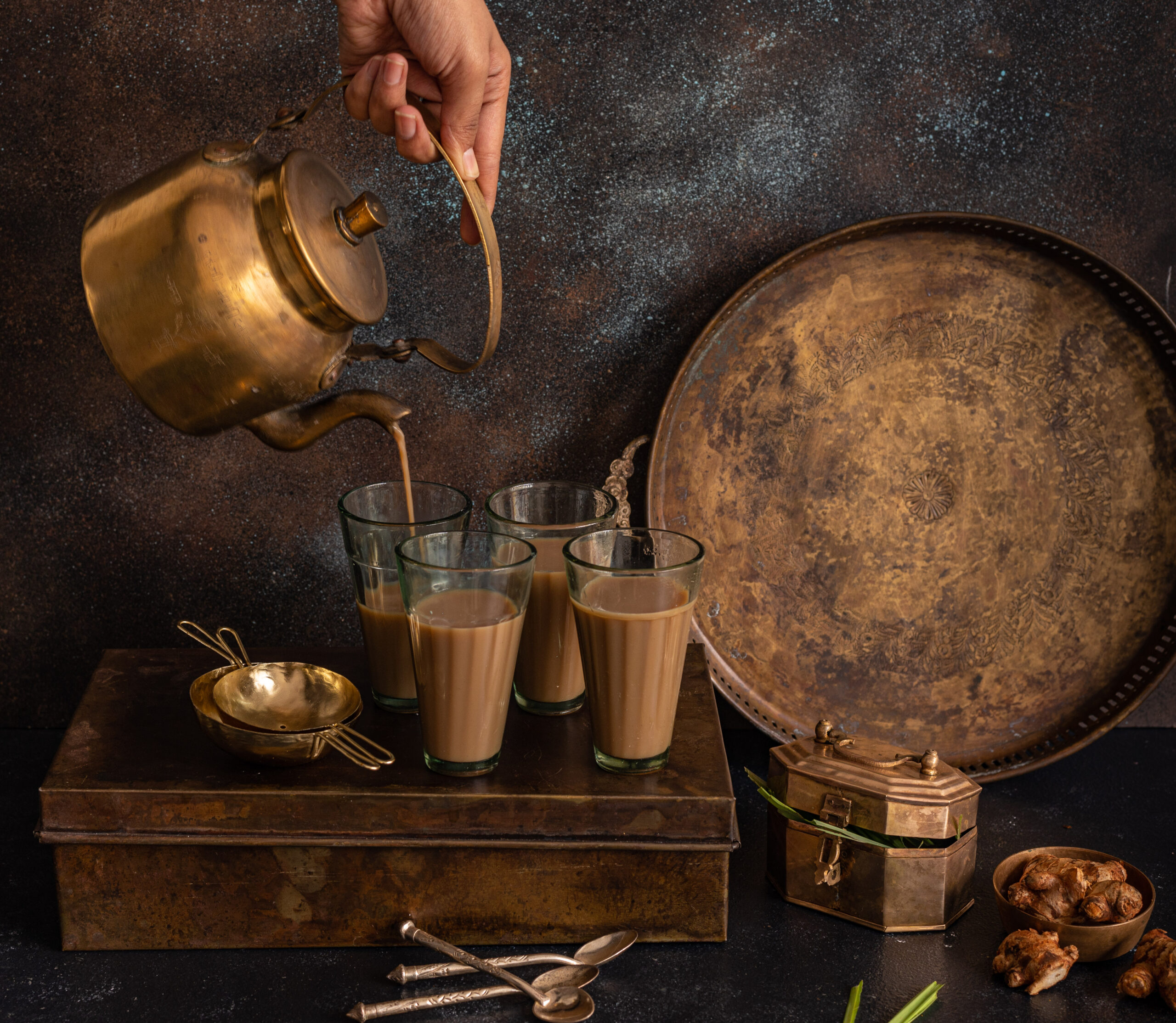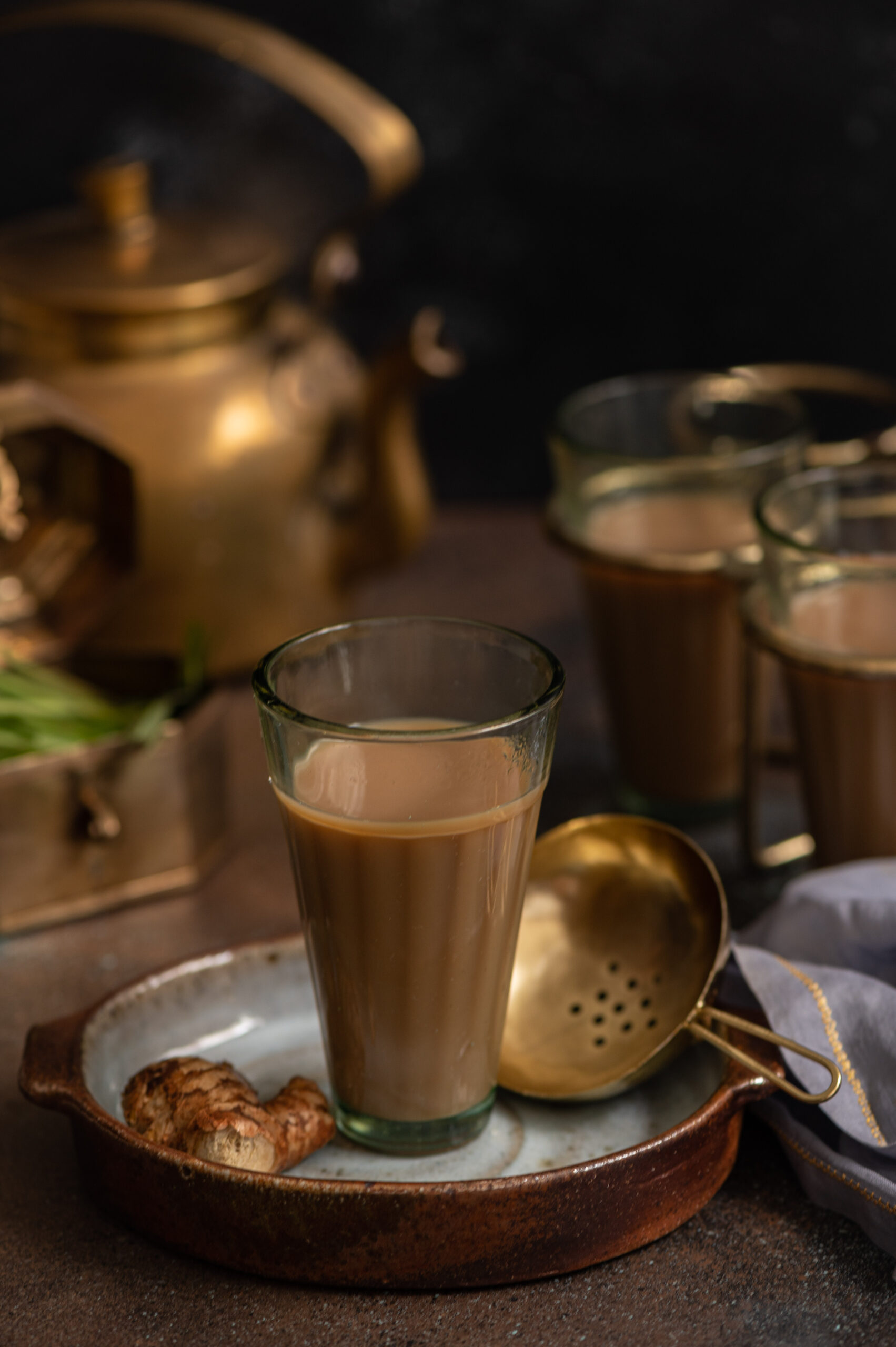Dal is the daily staple in practically every Gujarati home, and it’s no different in mine. The classic style is slightly sweet and slight sour, and I shared the recipe for it a few months ago. I try to use a range of lentils, so that we get a good mix of nutritious elements as well as variety of tastes over the course of a week at home. Other dal recipes that I’ve shared earlier include this horsegram dal and this mixed dal. There are hundreds of varieties across India, and I’m happy to share one more recipe that I hope you’ll be able to add to your repertoire too.
Just like there are hundreds of varieties of dal in India, there are also hundreds of varieties of mangoes. Other than the parrot-beaked, sweet-sour killimooku, I also have the not-sweet-at-all sindura growing in my garden. This won’t begin to fruit properly until May, however, and I had been eyeing it daily, wanting to make some amchur (dry mango powder), which requires a sour variant. Finally, I decided to put out an enquiry in a local resource group, asking if anyone had organic raw mangoes I could use for the same. Shefali, whom I had known through mutual friends, came to my rescue. She sent across a beautiful bounty from her own tree. Sour mangoes – and one very sweet gesture.
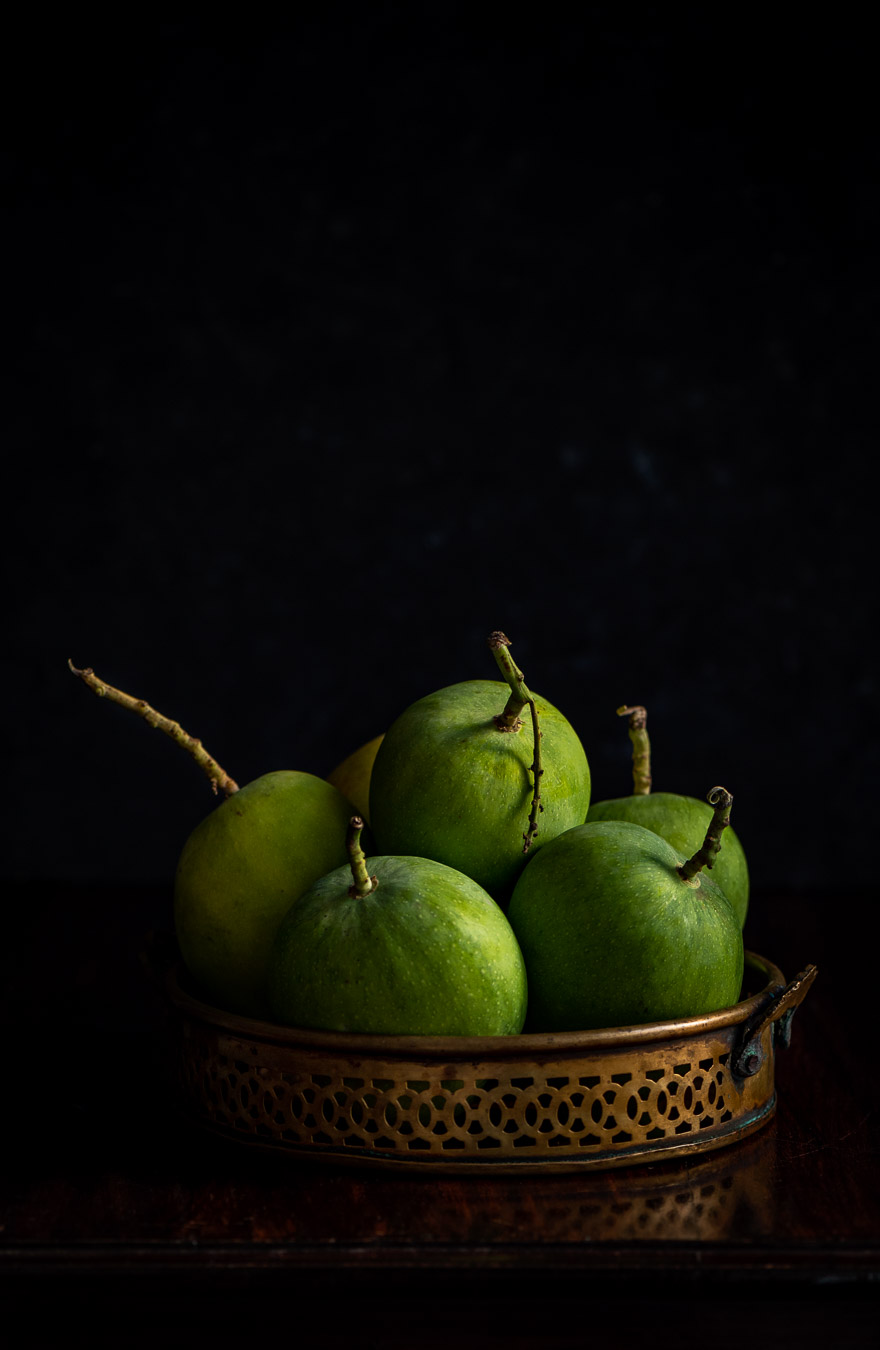
This vegan raw mango dal recipe came about because I had wondered whether raw mango would be a good substitute for the kokum or lime that I was using to add some tang to our daily dals. Since I had Shefali’s mangoes on hand for the amchur, I decided to give this a try. It worked out spectacularly – raw mango here isn’t just a condiment, but is in fact a vital component of this dal.
I know that many communities across the country make dals using either raw mangoes or ripe mangoes, and that this is especially common in Bengal and Kerala. The harvest in my home aside, I was already in ideation mode about what kinds of recipes to share with you through the season, and I knew I wanted to do something that would accompany rice or rotis. Having given you this ripe mango rasam a few summers ago, I was keen to offer a raw mango accompaniment this time. I had been thinking over how to, when this recipe grew organically from the kokum-substitution I’d mentioned earlier. Don’t you just love it when something simple clicks in a surprising way, and you realise that you’ve innovated something special? I’m all the more excited these days when I discover I can make something the vegan way, and this recipe is vegan too.
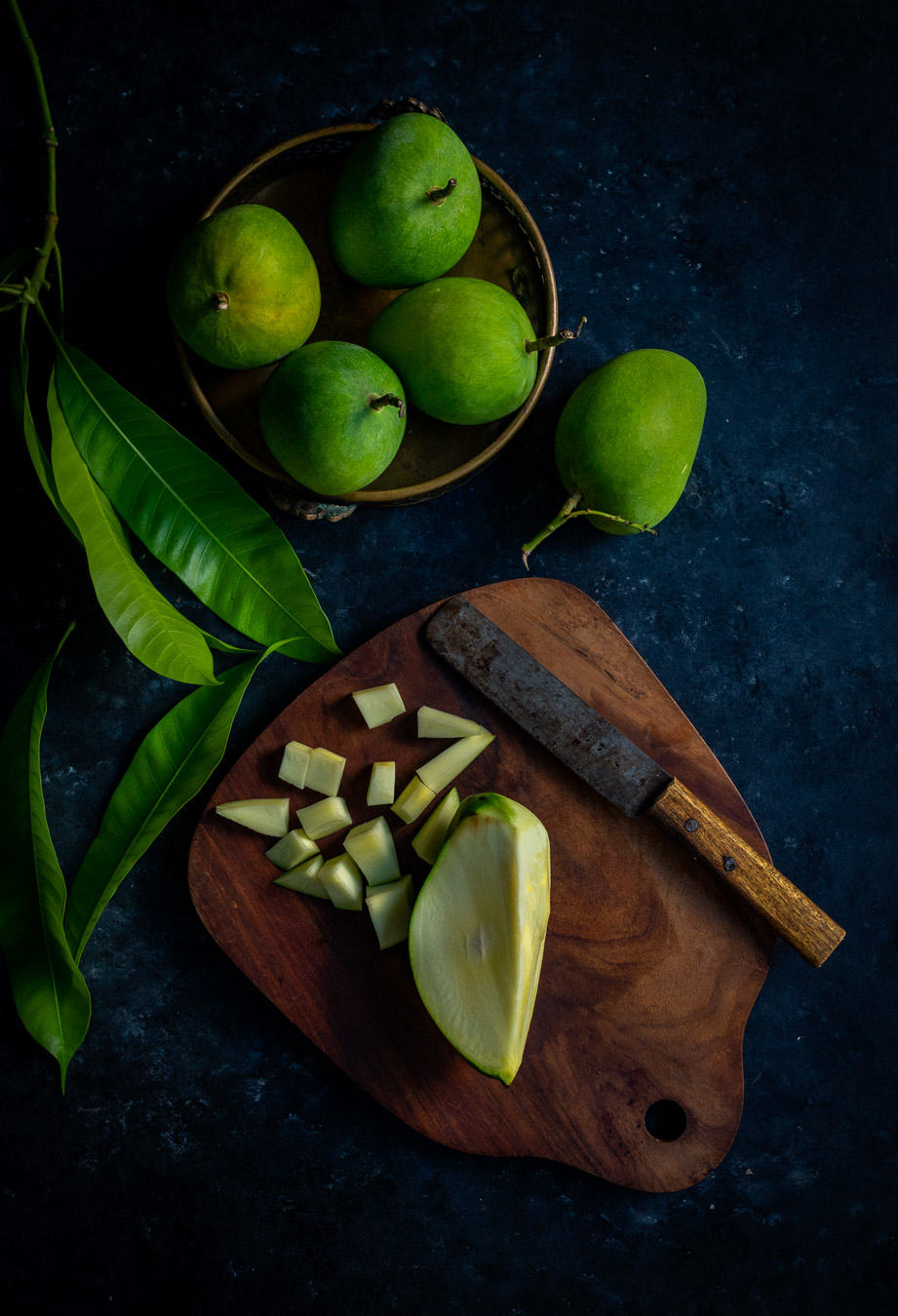
Raw mangoes are nutritious, as they are high in Vitamins A, B and C, as well as magnesium and calcium, thus offering health benefits ranging from the cardiac to the dental, with some heat-busting and hydrating properties to boot. They’re great for summers as they can prevent water loss, replenish the thirsty body, as well as help against stomach ailments arising from the heat. Digestive detoxification, lowering cholesterol levels and improving hormonal functions are some of the other qualities they are known to have.
As for the lentils I’ve chosen to use in this recipe, they are combination of split yellow mung dal and toor dal (pigeon pea). The former are lighter on the stomach than the latter, hence the mingling of the two to create a dish that’s easier to digest while still giving you the benefits and taste of both lentils. Since we mostly eat this dal at lunch time, I also avoid the use of garlic on weekdays as most of us have to get back to meetings and so on during the rest of the afternoon. If you make a thick preparation, this dal is ideal for rotis, whereas a thinner preparation is best enjoyed with rice.
As for me, being a carb-observant eater, I often consume a bowlful of dal with just a tablespoon of rice, topped with a liberal tempering of ghee (not vegan, I know – but this is completely optional). This becomes such a healthy, delicious meal all by itself. I am still light on my feet afterwards, and that little extra kick that comes from the raw mangoes when I’ve made this particular recipe that day is so satisfying in itself.
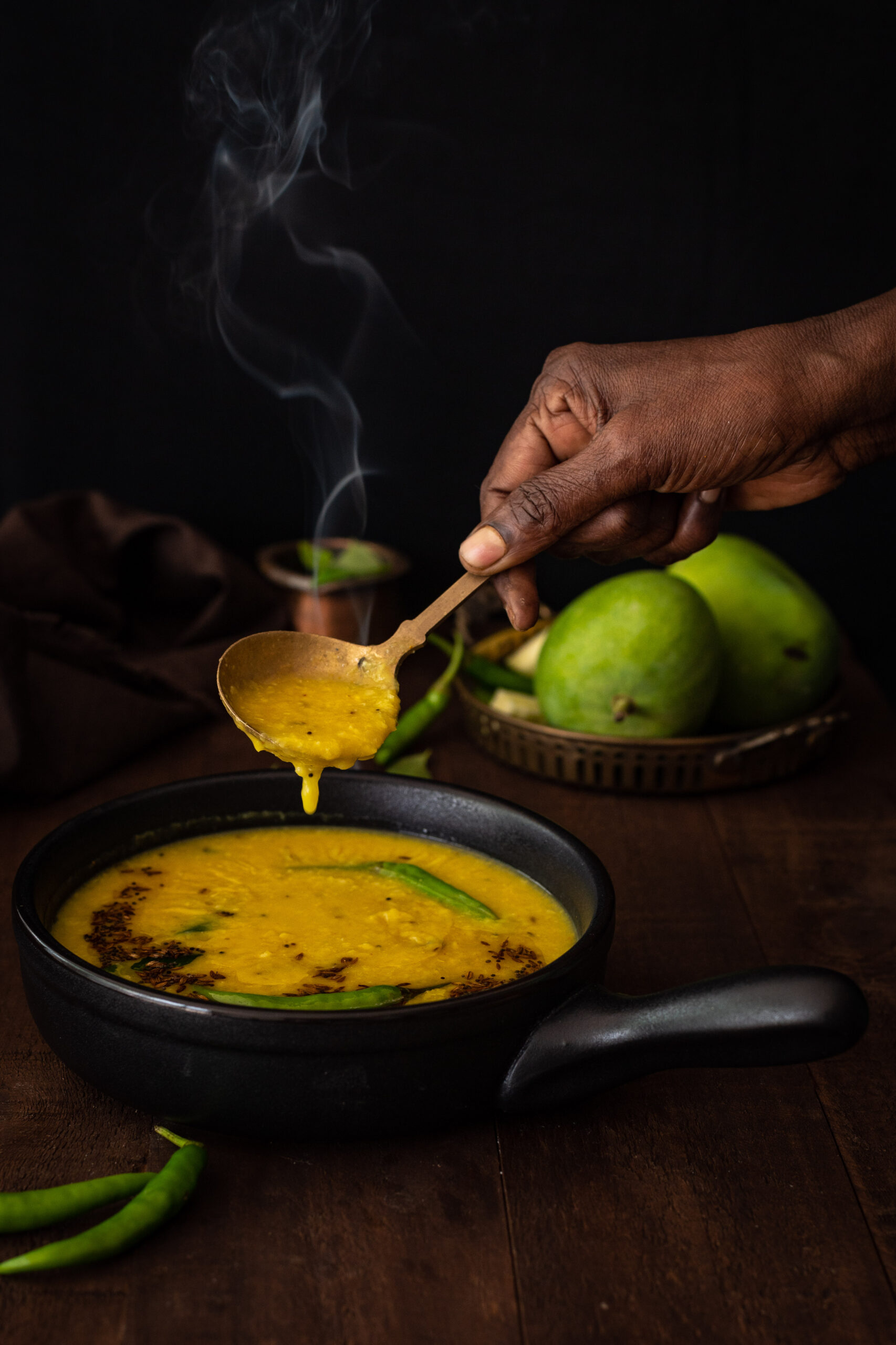
Raw Mango Dal
(Yield: 4 cups)
¼ cup toor dal
¼ cup split mung dal
½ cup cut raw mango
1½ cups water to cook
Salt to taste
1 tablespoon oil
½ teaspoon mustard seeds
½ teaspoon cumin seeds
¼ teaspoon turmeric powder
1 teaspoon green chili/ginger paste
¼ teaspoon asafoetida
½ teaspoon coriander/cumin powder
4-6 curry leaves
2 tablespoons finely chopped coriander leaves
Rinse the dals together and place them into a pressure cooker, along with the cut raw mango and turmeric.
Let this cook until tender. Mash the dal with a masher and set aside.
In a kadai, add the oil, and once it has heated, add the mustard seeds. You may substitute the oil with ghee if you are not making a vegan preparation. Once they begin to splutter, add the cumin seeds, curry leaves, asafoetida and finally the chili/ginger paste. Sauté for 2 seconds and add the mashed dal. If you like the flavour of garlic, you can add some during the sautéeing.
Add salt and coriander/cumin powder. Mix well and serve hot with the garnish.
If the mango is not sour enough you can add more chunks of it or even squeeze in some lemon or lime.
If like me or any Gujarati you know, you have a sweet tooth, you could also add some jaggery to compete with the tang of the raw mango. This would make for a most delicious dal, with a medley of tastes.
As it is, this is a very simple and appetising dal, with the flavours of the mango and the lentils evident because it is not overloaded with spices or condiments. It’s not the kind of dal one makes when a burst of masala is preferred; instead it is the comforting, homemade kind, albeit with a little kick from the raw fruit.
I hope that this vegan dal made with sour mangoes adds nutrition to your diet, gives you energy and strength, and as strange as it may sound – sweetens your day during these challenging times with its sheer deliciousness.
